#TED Global 2012
Explore tagged Tumblr posts
Text
In 2012, Dutch teenager Boyan Slat presented a TED Talk on his concept for cleaning up the ocean with simple mechanisms to sweep up all the trash. While scientists and plastics experts cautioned that his ideas were ineffective, Slat’s non-profit the Ocean Cleanup, founded the year after his talk went viral, has gained millions of followers and big-name backers, including Salesforce, Maersk, KIA, and PayPal’s Peter Thiel. But the venture had one major problem: its first two designs didn’t work, despite the group burning through tens of millions of dollars over the course of a decade. The Ocean Cleanup has since pivoted to work with upstream river “interceptors” that are much more efficient at capturing garbage, but its website still prominently features its latest ocean debris “solution”—essentially a trawl fishing net dragged between two boats that has, to date, collected a comparatively miniscule amount of trash. Tech projects like these are more of a curse than a blessing. Even if the Ocean Cleanup one day somehow beats the insurmountable odds and removes all surface-level traces of plastic marine pollution, it’d still be missing the vast majority of waste that sinks to the bottom of the ocean floor, or breaks up into tiny microplastics. While companies like these bring increased attention to the plastics crisis, they’re ultimately flashy gimmicks that lull our public consciousness into thinking a clever gadget can solve a collective-action problem. These projects also allow consumer brands—like Coca-Cola, an official “Global Implementation Partner” of Slat’s group—to greenwash their continued massive plastic production, while lobbying behind-the-scenes against regulations that would actually help the world break its plastic addiction. “We now know that we can’t start to reduce plastic pollution without a reduction of production,” environmental scientists Imari Walker-Franklin and Jenna Jambeck write in the introduction to their forthcoming study, Plastics. To meaningfully address this crisis and others like it, we need to look upstream, invest in reuse infrastructure, and mandate biodegradable packaging and high material recyclability. At a minimum, we need to start making producers bear the cost for the collection and disposal of their poorly designed goods.
223 notes
·
View notes
Text
youtube
Richard Reynolds, Environmentalist *www.guerrillagardening.org
Guerrilla Gardening : Why People Garden without Boundaries
"We fight not with guns, but with flowers(우리는 총대신 꽃으로 싸운다)"
한밤중, 버려진 땅에 처음으로 꽃을 심을 때만 해도 리처드 레이놀즈는 자신이 게릴라 가드너의 선봉이 되리라고는 생각도 하지 못했다. 공공장소를 무시하고, 흉물스러운 도시 한 구석을 무관심하게 바라보는 세력과 맞서 싸우게 될 줄은 꿈도 꾸지 못했던 것이다. 더욱이 자신이 범세계적인 운동의 선두에 서리라고는! 하지만 그는 곧 '조용한 혁명'의 중심에 서게 된다. 전 세계에 퍼져 있던 게릴라들이 자신이 경험한 각종 '꽃 심기 전투'의 경험을 나누기 위해 그가 만든 블로그GuerrillaGardening.org에 마구 쳐들어오기 시작한 탓이다. 그리고 얼마 안 가 이 블로그는 전국 방방곡곡에서 활동 중인 게릴라 가드너들의 베이스캠프가 되었다. 거기서는 황무지를 꽃밭으로 만들 '씨앗폭탄'이 제조되고, 바람처럼 빠르고 조용하게 작전을 수행할 수 있는 '전투 노하우가' 오고간다. 우리의 삶을 황폐하게 만드는 모든 것에 작지만 꾸준한 노력으로 대항하는 사람들, 자연을 배제한 건축과 무분별한 도시계획에 염증을 내는 의식 있는 전문가들, 그리고 자급자족 원칙에 따라 소박한 삶을 가꾸기 원하는 그린 전사들에게 그는 힘찬 위로의 씨앗이 될 것이다.
When Richard Reynolds planted a flower on unused small plot in the middle of night for the first time in his life, he never expected to be on the forefront of the "Guerrilla Gardening" movement. He had never thought of fighting against the forces that didn't care public spaces and cast a nonchalant look at abandoned corners of ever-sprawling cities. Nor had he dreamed of being at the vanguard of a global movement. But soon he stood at the center of a "silent revolution," as guerrillas around the world raided his blog GuerrilaGardening.org to share their story of flower-planting. There are people standing up against things that make our life dry and dull with small but steady endeavor, concerned experts who find the architecture with no consideration of nature and reckless urban planning sick and tired, and the green troops who wish to lead simple and harmonious life. Richard Reynolds is the seed of consolation and hope for these people.
+++++++++++++++++++++++++++++++
In the spirit of ideas worth spreading, TEDx is a program of local, self-organized events that bring people together to share a TED-like experience. At a TEDx event, TEDTalks video and live speakers combine to spark deep discussion and connection in a small group. These local, self-organized events are branded TEDx, where x = independently organized TED event. The TED Conference provides general guidance for the TEDx program, but individual TEDx events are self-organized.* (*Subject to certain rules and regulations)
'퍼뜨릴만한 가치가 있는 아이디어'라는 정신의 TEDx 행사는 지역에서 사람들이 함께 모여 TED와 같은 경험을 나누고자 자발적으로 만든 프로그램입니다. TEDx 행사에서는 TEDTalks 영상과 실제 발표자의 강연이 결합되어 깊이있는 토론과 교류가 일어납니다. 이렇게 지역기반의 자생적으로 조직된 행사가 TEDx이며, 여기서 x는 독립적으로 조직된 TED 이벤트라는 것을 의미합니다. TED 컨퍼런스는 TEDx 프로그램에 대한 일반적인 가이드라인만 제공하며, 각각의 TEDx 이벤트는 자체적으로 조직되었습니다.
TEDxItaewon wants to give you a chance to network people, share your ideas, make a difference based on international/multicultural area, Itaewon, S.Korea.
TEDxItaewon은 한국의 이태원이라는 국제적/��문화적 도시를 기반으로 하여 여러분들께 사람들과 소통하며 아이디어를 공유하고 변화를 만들어 내도록 기회를 드리고자 합니다.
TEDxItaewon 2012, sponsored by Ministry of Environment, Korea, was held for August 11 (Sat), 2012 with 1,000-strong audience. The theme 'Nature+' of the conference is set to raise public awareness of the nature and awaken communities to the beauty of nature and urban life in harmony. TEDxItaewon2012 consists of three sessions as below, supported by simultaneous interpretation (Kor-Eng);
1. Rediscover the wonder 2. Rebreathe the world 3. Reframe the future
Date : August 11, 2012
Venue : Auditorium, COEX
Size : 1,000 seats
www.tedxitaewon.org
www.facebook.com/tedxitaewon
#TEDx Talks#ted talks#solarpunk#guerilla gardening#Guerrilla Gardening#urban gardening#urban garden#garden#Gardening#Richard Reynolds#london#england#Youtube
9 notes
·
View notes
Text
I rewatched Avengers: Age of Ultron again and I’d like to defend my husband, Steve, because Ultron said this to him:
You can’t live without a war.
What complete and utter bullshit. Steve could very much live without a war, but the problem was that he was never really allowed to know what adult life without war was like. When Steve was born, the world was in the aftermath of the First World War. Cities and homes destroyed, reparations made, conflicts everywhere. When he grows up, bam, it’s the Second World War and there’s global chaos, but he wants to help America, and when he really gets a chance to, he goes in the ice and he doesn’t experience coming down from it.
He wakes up from the ice and it’s a whole new world, but he still experiences what a lot of soldiers do after a war ends, which is struggling to find a sense of purpose. Steve’s mom is dead, Bucky is presumed dead, Peggy’s an old woman now, his home’s probably torn down and he’s being told he skipped two whole generations before he was unfrozen. Soon after that, of course, you have the arrival of Loki, for which Steve is drafted, and he never really got a chance to heal from 1945, as you can see with the punching bag scene.
Soon after 2012 comes The Winter Soldier, and he AGAIN has to fight against an organisation he’d initially trusted but then his faith is being destabilised, and Natasha’s the only one he can trust at this point. He’s thinking like a soldier cause this is a few-man war against a government covert operation who’s been infiltrated by the very people he set out to destroy in the first place, so instead of salvaging SHIELD, he orders to destroy it, which probably gave him security as it’s one less war if things go out of hand again.
Again, more war before it can be processed, cause Age of Ultron happens, and the one time he was finally finding some happiness within it all with an odd, newfound family (the Avengers) Ultron has to come out with an all out robot army and disrupt that comfort.
At this point, Steve’s hardwired to think that war is the only constant thing, cause it’s the only thing he’s allowed to know. Give this gorgeous man a break.
Thank you for coming to my Ted talk.
6 notes
·
View notes
Text
Qatar, the small emirate on the Persian Gulf, has long enjoyed unmatched influence over Hamas, the ruling power in Gaza. It is now threatening to withdraw its services as a mediator between Hamas and Israel unless Israeli Prime Minister Benjamin Netanyahu ceases what Doha considers to be a smear campaign against it. The fate of the remaining Israeli hostages in Gaza could now hang in the balance of this new diplomatic dispute.
Last week, Qatari Prime Minister Sheikh Mohammed bin Abdulrahman Al Thani said that the mediation process had been abused for “narrow political interests,” and that Qatar will make “the appropriate decision at the right time.” It was a message intended for Netanyahu, according to an Arab official who spoke to Foreign Policy.
Qatari officials reportedly believe that Netanyahu is deliberately delaying a possible release of hostages to prolong the war and stay in power. By threatening to walk away from the negotiations, they believe they can pressure Netanyahu into clarifying whether negotiating a hostage release is a priority for him at all. “We only negotiate when both sides want us to,” said a Qatari official who spoke to Foreign Policy on the condition of anonymity considering the sensitivity of the matter.
Netanyahu knows Qatar is necessary to the negotiations owing to the leverage that it gained over Hamas in the years prior to the current war. Qatar sent $1.3 billion in aid to Gaza between 2012 and 2021, at a time when Israel had otherwise largely cut off the territory, and it lent Hamas international credibility by giving its representatives airtime on Al Jazeera.
Qatar is well aware of its unique diplomatic position and is enjoying the limelight on the global stage. And yet there have been valid questions around Qatar’s intentions. There is strong suspicion in Israel and in parts of the U.S. government that it is biased in Hamas’s favor and pushing for its agenda. Doha, they say, could more effectively compel Hamas if it threatened those of its leaders who have taken residence in Qatar with expulsion, or with extradition to a country that lists Hamas as a terrorist organization.
Qatar started to host Hamas in 2012 after the group ran afoul of Syrian President Bashar al-Assad and claims to have opened its doors at the behest of then-U.S. President Barack Obama. But Foreign Policy has learned from the aforementioned Arab official who is aware of the negotiations that despite bipartisan pressure from both Democratic and Republican lawmakers, Qatar has not yet asked Hamas to relocate.
Last week, U.S. Rep. Steny Hoyer accused Qatar of blocking negotiations, essentially abusing its role as a mediator. He was the fifth lawmaker to urge Congress to scrap Qatar’s status as a major non-NATO ally granted to the Arab nation in 2022 for supporting evacuations from Afghanistan. Any such demotion would not only be a global embarrassment for Qatar but would relegate it below Egypt and other competitors in the neighborhood who also hold the same designation.
“Qatar needs to make it clear to Hamas that there will be repercussions,” Hoyer said in a statement. Earlier this month, Republican Sens. Ted Budd, Joni Ernst, and Rick Scott introduced a bill that would require the United States to conduct a review to “terminate the designation” if Qatar didn’t expel or extradite Hamas’s leadership, “including Ismail Haniyeh, Khalil al-Hayya, Khaled Mashal,” its biggest leaders.
Orly Gilboa—the mother of 19-year-old Daniella Gilboa, who has been held hostage by Hamas since Oct. 7, 2023—said that the United States’ pressure on Qatar could work. “Qatar supports Hamas, but they want good relations with the U.S., so they will do what the U.S. wants them to do,” she told Foreign Policy over Zoom.
But some U.S. lawmakers said the move to scrap the status was premature and unwarranted. That has encouraged Doha to stay the course. But the Arab official believes that those who asked to strip Qatar of the designation are perhaps pro-Netanyahu lawmakers and do not speak for the Oval Office.
Budd’s legislation argues that if Hamas is refusing “reasonable” negotiations, then there is no reason for Qatar to continue hosting Hamas’s political office or members, parroting the viewpoint of many in Israel’s security community. But “reasonable” is being defined differently by the various parties concerned.
While Israel expects Qatar to convince Hamas to release hostages and then intends to resume the war to eliminate the group entirely from Gaza, Qatar finds merit in Hamas’s demand of a permanent cease-fire. This is the crux of the disagreement between Qatar and Israel.
“I don’t think it’s an unreasonable request,” said an Arab official familiar with the negotiations. “If they release all hostages, they want an end to the war.”
However, the Israeli security community suspects that’s not all Hamas wants. They argue it could have achieved an end to the war had it agreed to disarm and leave Gaza. Israelis fear that Hamas wants to return to Gaza, victorious, and carry out more attacks that match the cruelty of Oct. 7.
“We can’t hand Hamas a victory,” said Eran Lerman, a former Israeli deputy national security advisor. “After what they have done, we refuse to live with Hamas as our neighbors. And it’s not just Netanyahu, but there is wide support for the policy to eradicate Hamas.” Israel is ready to offer only a temporary truce until Hamas has been vanquished.
Doha makes the case that since the war has limited its ability to send aid to Gaza, it simply doesn’t have the kind of leverage it once did over Hamas’s leaders holding the hostages inside Gaza.
“Sinwar will rather die inside Gaza than agree to a deal to leave,” said an Arab official aware of the negotiations, referring to Yahya Sinwar, the Hamas leader within Gaza who was behind the Oct. 7 attack. “This is the mistake—this is what Israelis are not understanding.”
He said that threatening to kick out Hamas’s political leaders from Qatar will not bring the desired pressure on Hamas. Sinwar, who is making the final decisions about the hostage negotiations, doesn’t care about his group’s political representatives or where they live, “whether in Qatar, Turkey, Oman, or Iran.”
Israel also doesn’t care where Hamas’s leaders reside and has already declared that it will hunt them down wherever they may choose to hide. But Israeli leaders say that in the short term, they are focused on bringing back the hostages and eliminating Hamas.
Lerman said that Egypt has already been partly involved in negotiations, noting that it could become a single point of communication with Hamas if Qatar doesn’t succeed in mediating the release of the hostages in exchange for a temporary truce not a permanent cease-fire. “It’s not like we won’t be left with a channel of communication,” he said. “If Qatar cannot live up to its claim, that it has leverage over Hamas, then what’s the point?”
Some in the Israeli security community believe that once the long-expected Rafah operation has been successfully carried out and all of Gaza brought under Israeli occupation, Hamas’s leaders and members would be in for a run for their lives and more inclined to accept a deal on Israeli terms.
“Hamas will feel a very different kind of threat than they feel now—that will change their minds,” Lerman said.
It’s a tricky gamble. If Qatar walks out, Israel risks losing a mediator with more influence over Hamas than any other Arab state, and if Doha fails in ensuring safe hostage release, it may damage its ties with the United States. Thus far, neither side is willing to concede, and negotiations will likely go down the wire, further procrastinating the homecoming of the more than 130 Israelis believed to remain in Gaza.
Families of hostages have said that they want their loved ones released “despite the difficult price,” but they also don’t want Hamas to live next door, preferably.
“I prefer if there is a solution,” Gilboa said. “Maybe Hamas’s leaders can move to Qatar and live there.”
7 notes
·
View notes
Text
7. Abductions (pseudossier : le phénomène ovni)
À lire avant pour ne pas être trop perdu :
1. Petit historique - Partie 1
Pseudocomplément : l'affaire Roswell
2. Petit historique - Partie 2
3. Petit historique - Partie 3
4. Caractéristiques générales
5. Comportement et lieux d'intérêt
6. Troisième type
Pseudocomplément : le mystère Oummo
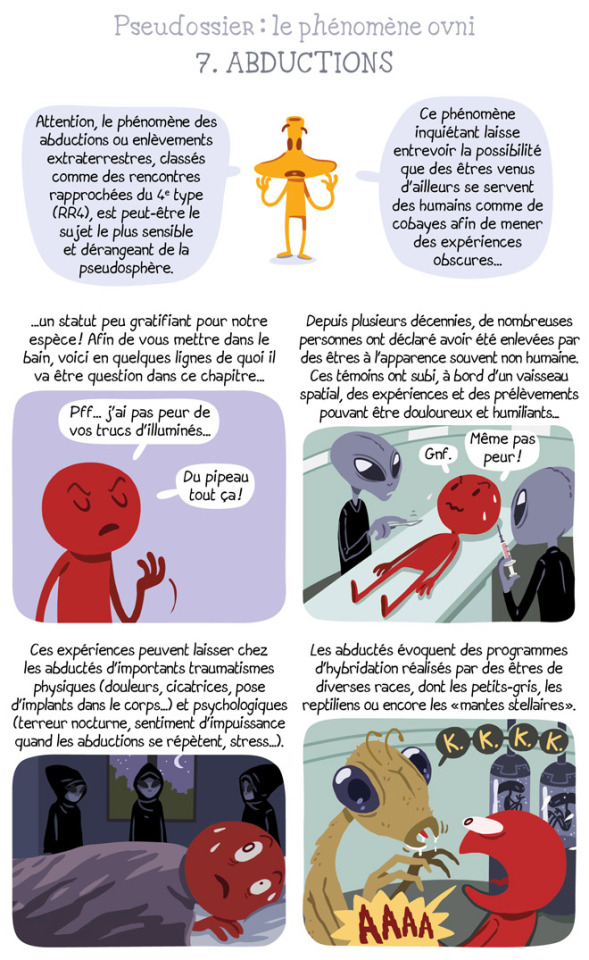


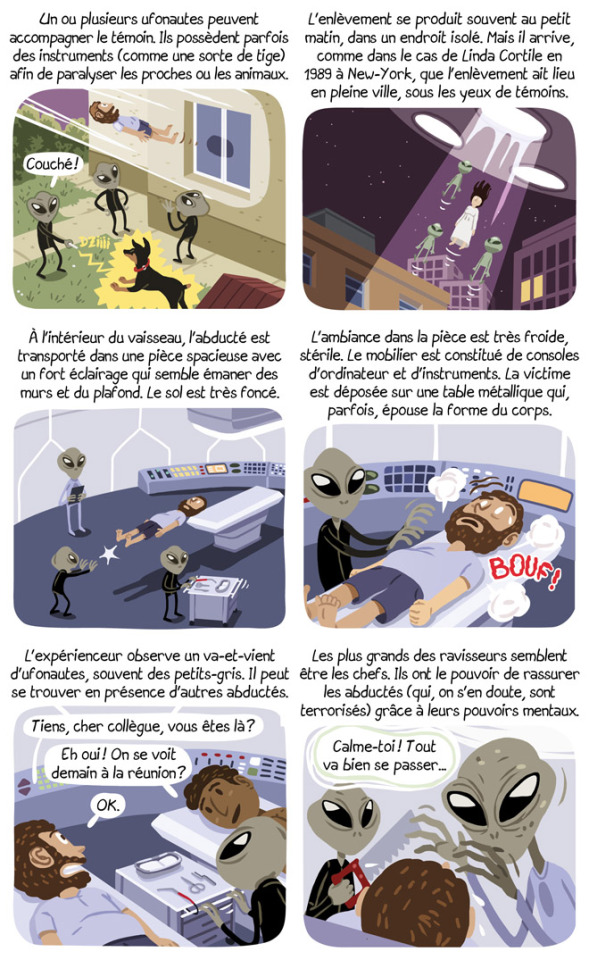
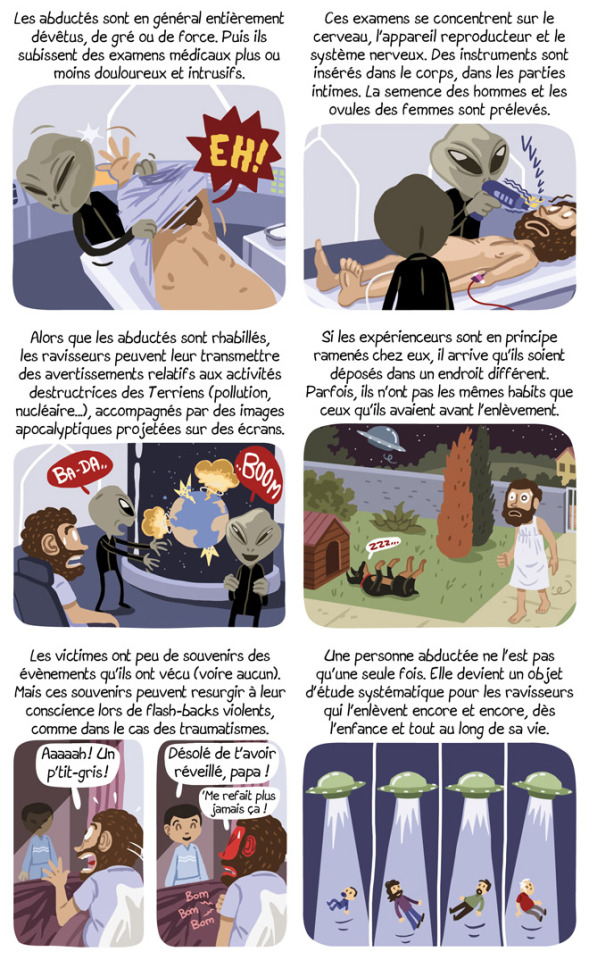
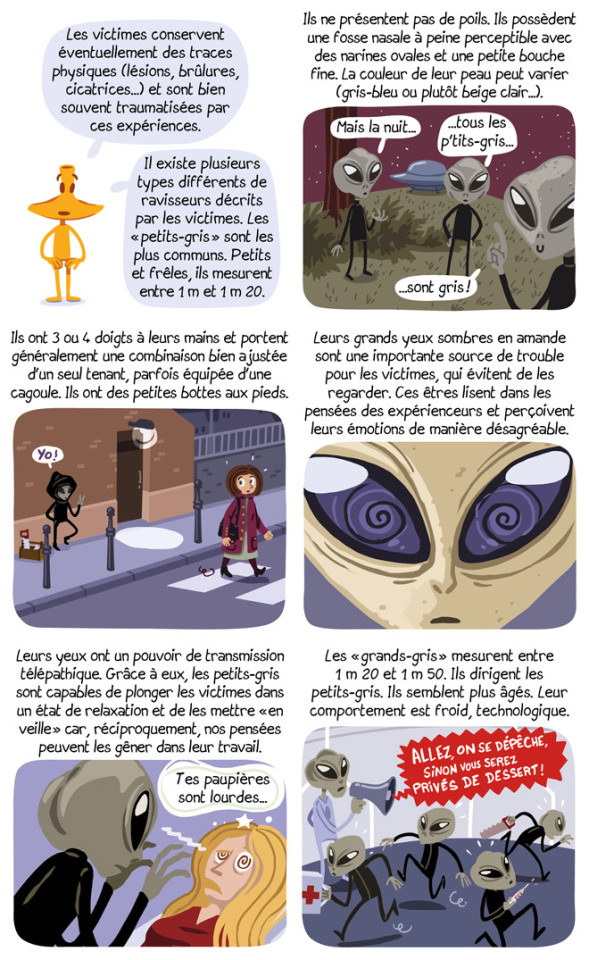
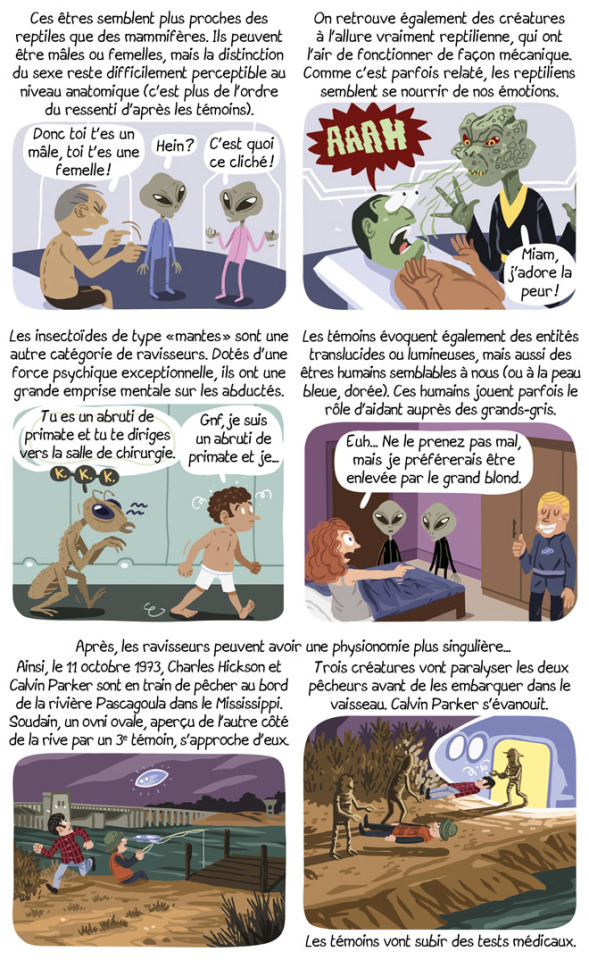
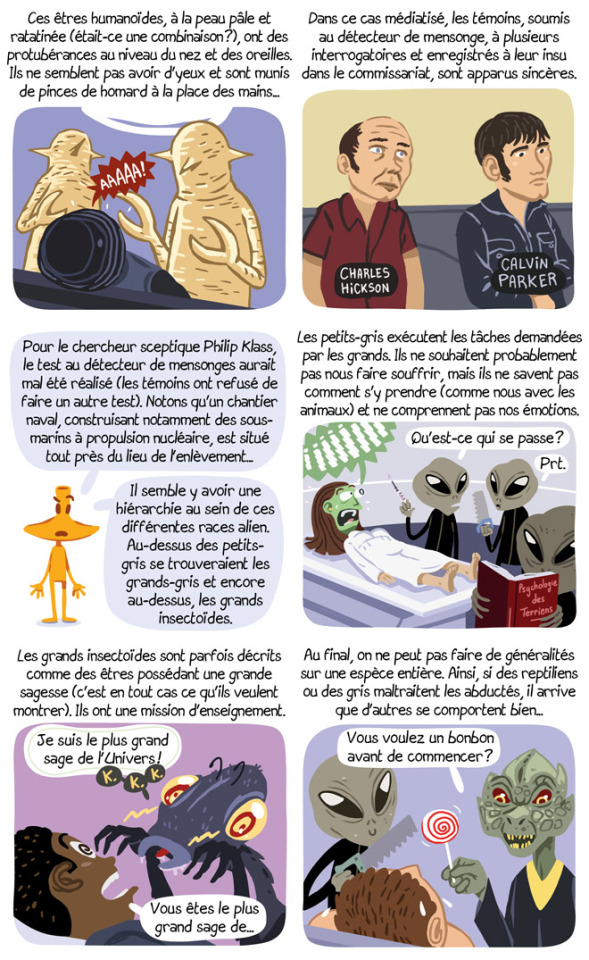

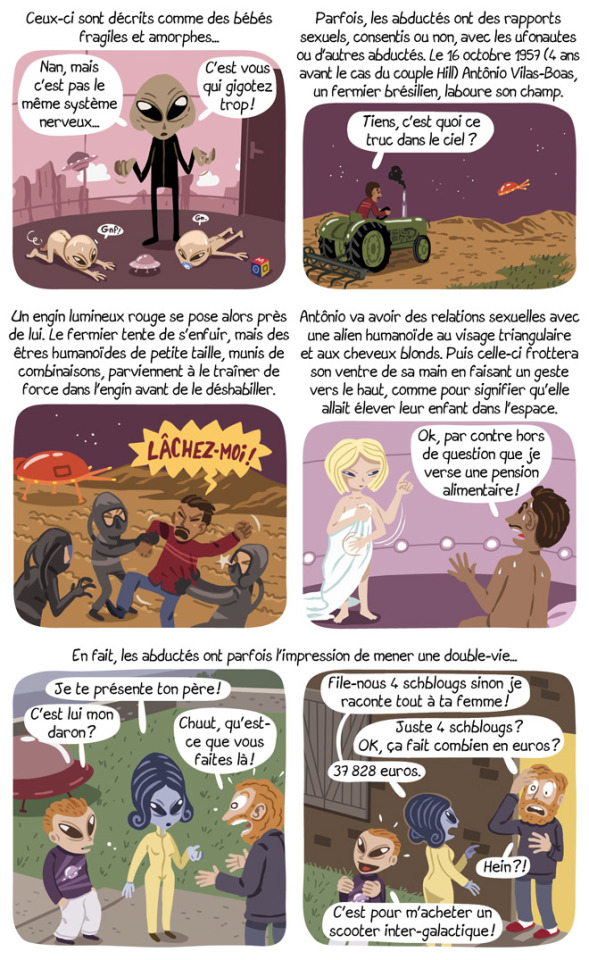
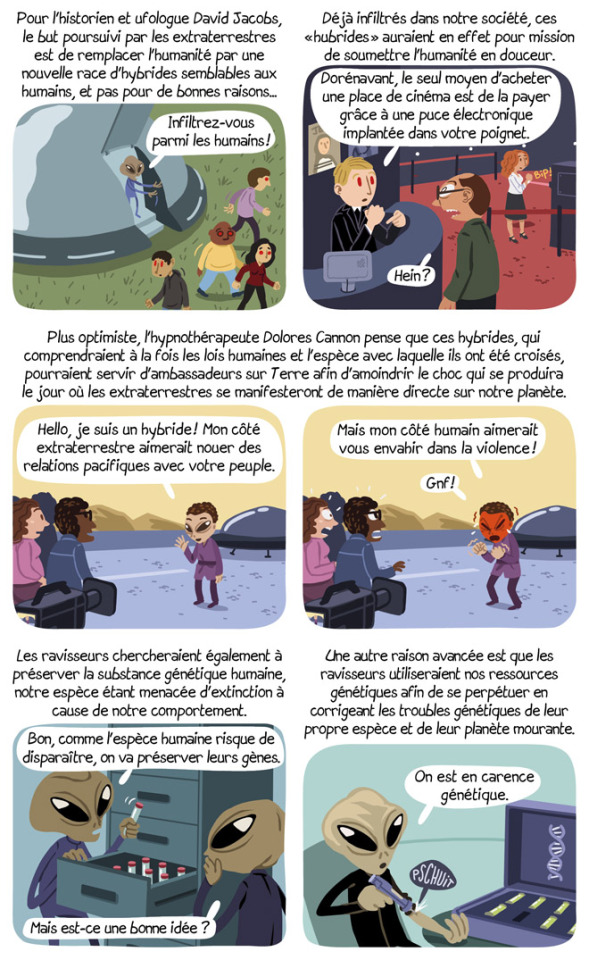
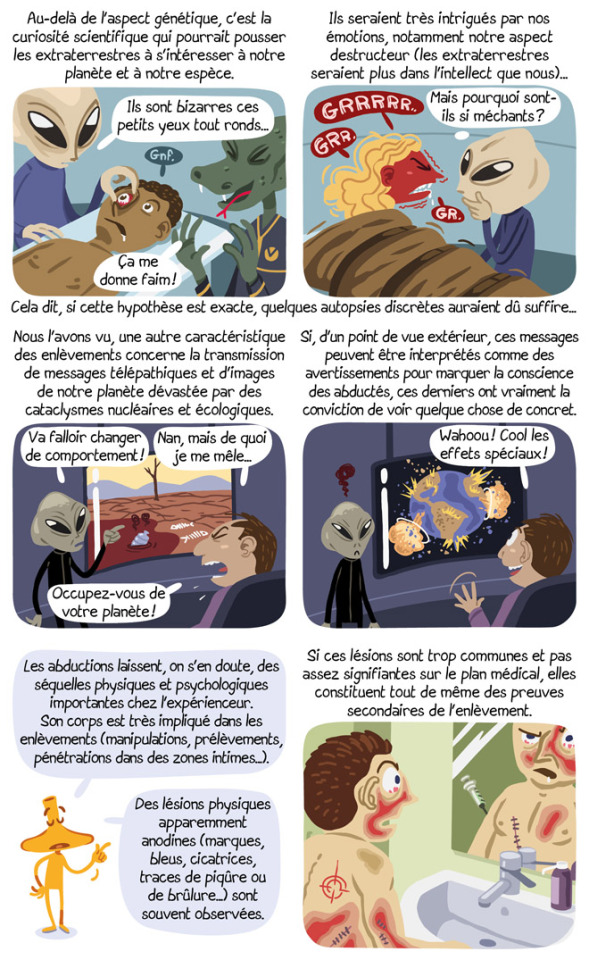
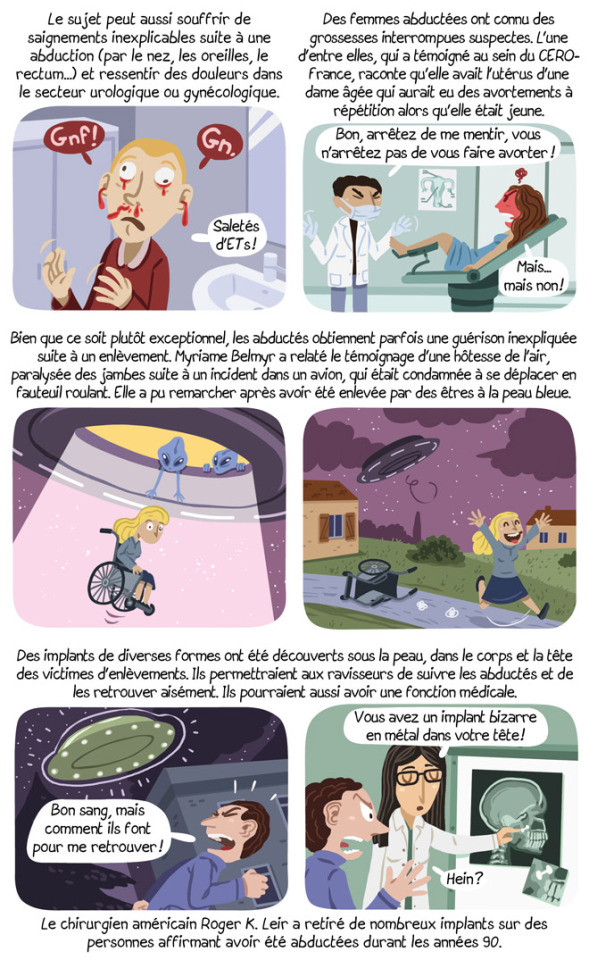

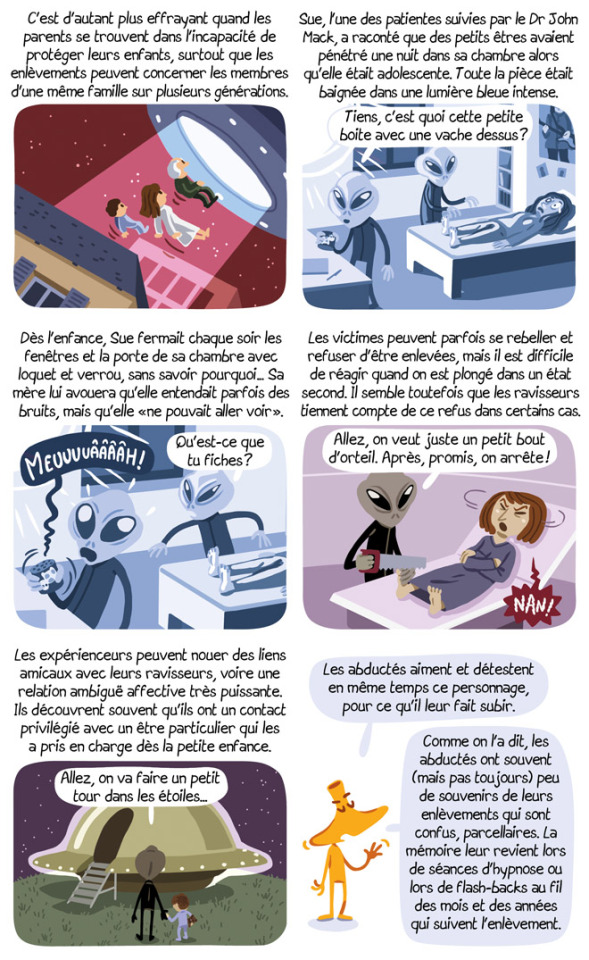
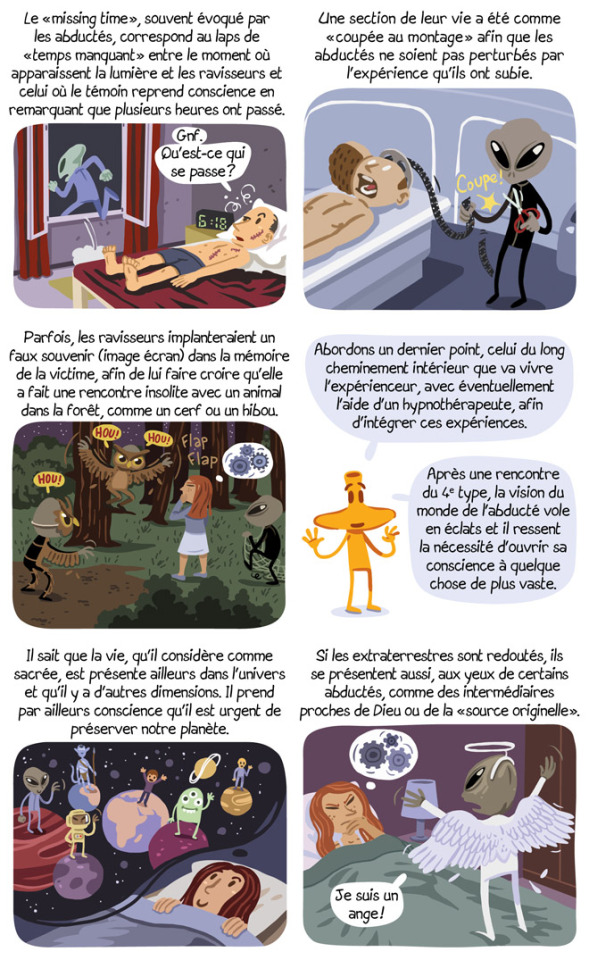

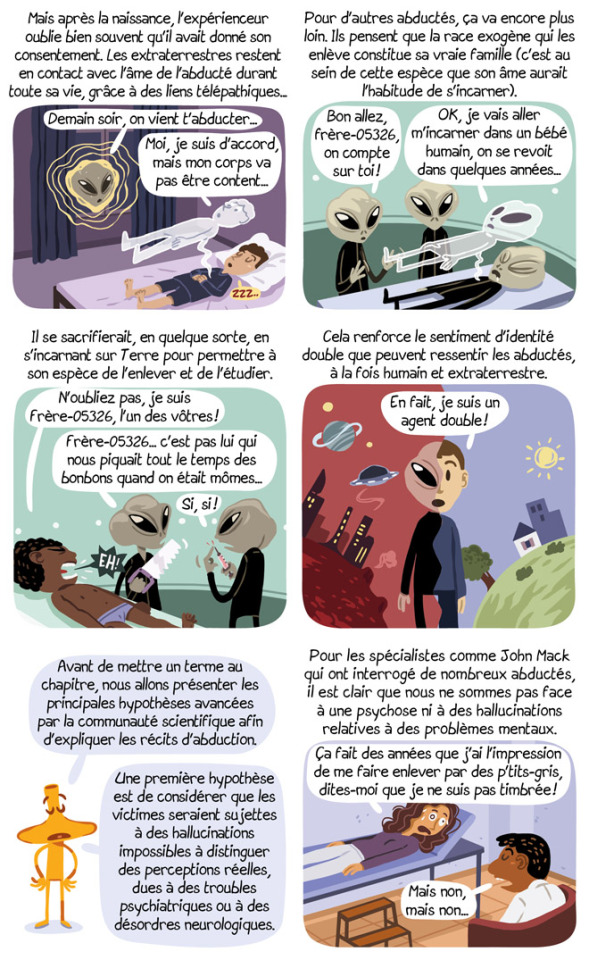


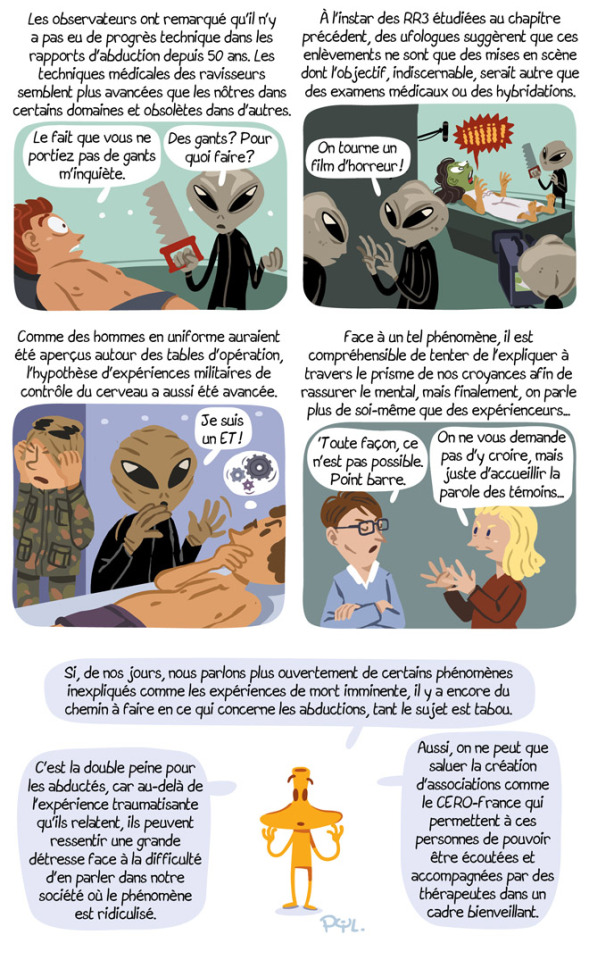
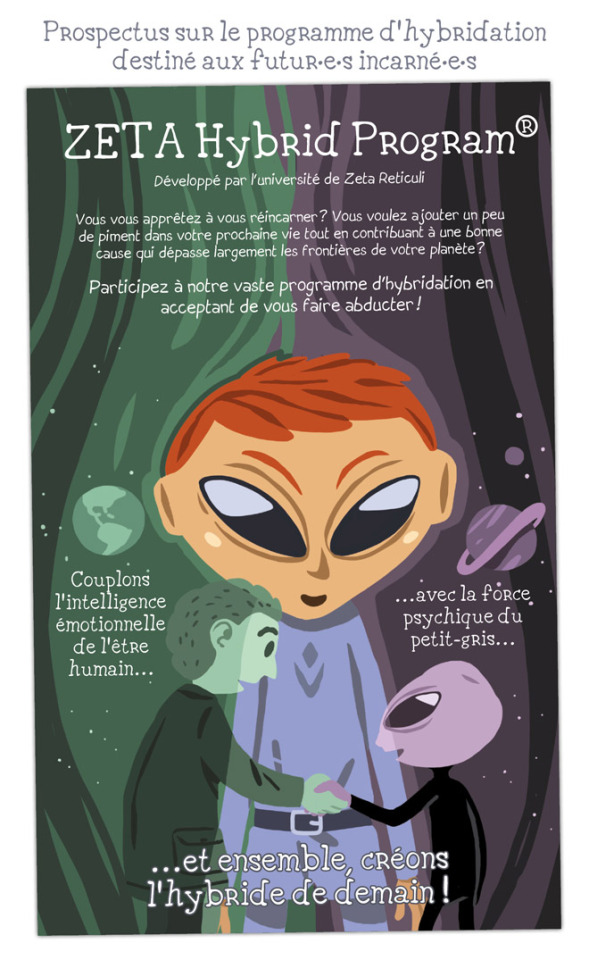
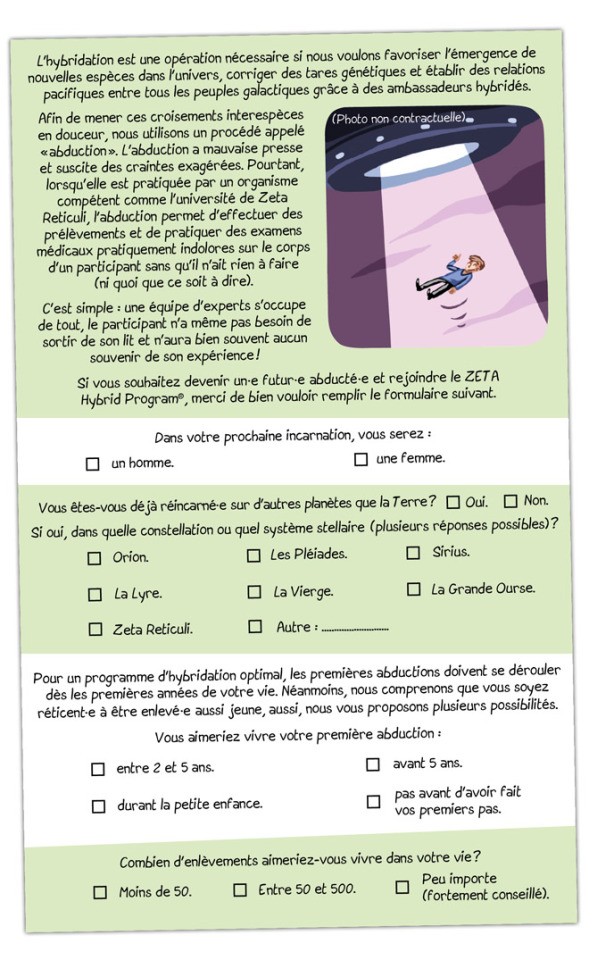


Je remercie les chercheuses et chercheurs cité·e·s dans ce pseudossier pour leurs travaux. Pour réaliser ce pseudossier, je me suis appuyé sur des films documentaires, des interviews vidéos, des ouvrages, des articles de presse ou de sites internet. Je remercie les pseudosphéristes passionnés qui en sont à l’origine.
Principales pseudosources :
Pour ce chapitre, je me suis inspiré globalement du livre suivant : Dr John E.Mack, Enlevés par des extraterrestres, Éditions J'ai Lu, 2012, première édition en 1994 sous le titre original "abduction"
Voir aussi le témoignage de Myriame Belmyr, ancienne présidente du CERO France, elle-même abductée. Chaîne Nuréa TV, « Extraterrestres & Abductions : Mon Histoire » avec Myriame Belmyr (https://www.youtube.com/watch?v=PlR5rL6kFpw&t=1591s) Chaîne Nuréa TV, « Enlèvements Extraterrestres : Mon Histoire » avec Myriame Belmyr (https://www.youtube.com/watch?v=mopftp4o4T4) Chaîne Nuréa TV, « Enlèvements Extraterrestres : Des abductés témoignent » avec Myriame Belmyr https://www.youtube.com/watch?v=ITa_r1OlJOY
Site du CERO France : https://cero-france.com/
Historique du phénomène des abductions : Eric Zurcher, Les apparitions mondiales d'humanoïdes, JMG Éditions, 2018 (pages 153 et 283)
Assurance contre les enlèvements extraterrestres : https://selectra.info/assurance/actualites/generalites/assurance-extraterrestre
Nombre potentiels d'abductés : (en anglais) Ted Goertzel, Measuring The Prevalence of False Memories: A New Interpretation of a "UFO Abduction Survey" (http://crab.rutgers.edu/~goertzel/UFO.htm) (en anglais) https://en.wikipedia.org/wiki/Alien_abduction_claimants
Déroulement général d'une abduction : Dr John E.Mack, Enlevés par des extraterrestres, Éditions J'ai Lu, 2012, première édition en 1994 sous le titre original "abduction", (pages 56 à 78)
Petit-gris, grand-gris et autres types d'ufonautes : Dr John E.Mack, Enlevés par des extraterrestres, Éditions J'ai Lu, 2012, première édition en 1994 sous le titre original "abduction", (pages 65 et 66) Stéphane Allix, extraterrestres : l'enquête, Éditions J'ai Lu, première édition en 2006 chez Albin Michel (pages 193 à 203)
Étres de lumière qui interviennent pour empêcher une abduction : Ouvrage collectif sous la direction de Fabrice Bonvin, Ovnis et conscience, Éditions le Temps Présent, 2015 (p.57)
Enlèvement de Pascagoula : https://fr.wikipedia.org/wiki/Enl%C3%A8vement_de_Pascagoula (en Anglais) https://darkhorsepressnow.com/pascagoula-alien-abductions-of-1973-50-years-later/ Chaine you tube du Mufon France, Les témoins d'un enlèvement OVNI à Pascagoula en 1973 se manifestent ENFIN (https://www.youtube.com/watch?v=3ILRVTt6nYc) https://rr0.org/science/crypto/ufo/enquete/dossier/Pascagoula/
Hybridations génétiques : Dr John E.Mack, Enlevés par des extraterrestres, Éditions J'ai Lu, 2012, première édition en 1994 sous le titre original "abduction", (pages 665 à 669 et pages 829 à 836)
David Jacobs : https://fr.wikipedia.org/wiki/David_Michael_Jacobs
Dolores Cannon : Voir par exemple son ouvrage suivant : Les gardiens, Ariane Publications, 2018.
Cas de Vilas-Boas : https://fr.wikipedia.org/wiki/Antonio_Villas_Boas Jaqcues Lob et Robert Gigi, ceux venus d'ailleurs, éditions Dargaud, 1973 (bande dessinée)
Symptômes physiques : Dr John E.Mack, Enlevés par des extraterrestres, Éditions J'ai Lu, 2012, première édition en 1994 sous le titre original "abduction", (pages 50 à 52, pages 785 à 790)
Témoin avec l'utérus d'une femme âgée : Voir le cas de Sandrine. Cero France, Rencontres extraterrestres - Des expérienceurs français parlent, édité par le Cero France, 2021 (page 42).
Guérison suite à une abduction : Chaîne Nuréa TV, « Enlèvements Extraterrestres : Des abductés témoignent » avec Myriame Belmyr https://www.youtube.com/watch?v=ITa_r1OlJOY (à 1 h 48 30 s)
Implants : Stéphane Allix, extraterrestres : l'enquête, Éditions J'ai Lu, première édition en 2006 chez Albin Michel (pages 282 à 286) https://fr.wikipedia.org/wiki/Implant_extraterrestre https://fr.wikipedia.org/wiki/Roger_K._Leir https://lesavoirperdudesanciens.com/2015/12/enlevements-et-implants-extraterrestres/
Syndrome post-traumatique : Dr John E.Mack, Enlevés par des extraterrestres, Éditions J'ai Lu, 2012, première édition en 1994 sous le titre original "abduction", (pages 78 à 82 et pages 796 à 801) Voir aussi les analyses des psychologues dans le livre : Cero France, Rencontres extraterrestres - Des expérienceurs français parlent, édité par le Cero France, 2021 (page 42) https://fr.wikipedia.org/wiki/Trouble_de_stress_post-traumatique
Dépressions nerveuses voire suicides : Stéphane Allix, extraterrestres : l'enquête, Éditions J'ai Lu, première édition en 2006 chez Albin Michel page 276 à page 281)
Témoignage de Sue : Stéphane Allix, extraterrestres : l'enquête, Éditions J'ai Lu, première édition en 2006 chez Albin Michel (chapitre 6, pages 181 à 192)
Cas de témoins ayant demandé à leurs ravisseurs de ne plus les enlever : Ardy Sixkiller Clarke, Rencontre avec le peuple des étoiles, Atlantes éditions, 2016 (chapitre 22, pages 267 à 274)
Missing time : Stéphane Allix, extraterrestres : l'enquête, Éditions J'ai Lu, première édition en 2006 chez Albin Michel (chapitre 6, pages 219 à 221)
Ancienne incarnation extraterrestre : Voir par exemple le cas d'Adeline. Cero France, Rencontres extraterrestres - Des expérienceurs français parlent, édité par le Cero France, 2021 (page 42).
À propos du profil psychologique des abductés : Dr John E.Mack, Enlevés par des extraterrestres, Éditions J'ai Lu, 2012, première édition en 1994 sous le titre original "abduction", (pages 66, 66, 145 à 157, 865 à 872)
Étude sur les abductés : https://news.harvard.edu/gazette/story/2003/02/alien-abduction-claims-examined-2/ https://www.newscientist.com/article/dn3395-memories-of-alien-abduction-cause-physical-effects/
Hypnose et faux souvenirs : https://sante.lefigaro.fr/l-hypnose-peut-elle-reveiller-les-souvenirs-20220623
Dr Benjamin Simon : Gildas Bourdais, OVNIS : vers la fin du secret ?, Éditions Le Temps Présent, 2010 (p.231)
Souvenirs traumatiques des enlevés : Gildas Bourdais, OVNIS : vers la fin du secret ?, Éditions Le Temps Présent, 2010 (p.235 - 236)
#pseudossier#phenomene ovni#extraterrestre#soucoupe volante#pan#abduction#enlevement#petit-gris#reptilien#insectoide#Vilas-Boas#Pascagoula#hybridation#implant#cero-france#John Mack#paralysie sommeil#hypnose#reincarnation#BD#humour
2 notes
·
View notes
Text

Os filmes que Adam Driver acha que todos deveriam assistir.
Com seu rosto distinto, voz profunda característica e vasto alcance como ator, não é surpresa que Adam Driver tenha se tornado o superastro global como o conhecemos hoje. Sua primeira aparição nas telas importantes foi em 2012, como o adorável Adam Sackler na série de sucesso de Lena Dunham, Girls . Pouco mais de uma década depois, Driver trabalhou com nomes como Martin Scorsese e Ridley Scott, interpretou o vilão Kylo Ren na nova trilogia Star Wars e encerrará 2023 com um papel principal na cinebiografia Ferrari de Michael Mann .
No entanto, você precisa de mais do que habilidades de atuação impecáveis para chegar onde Driver está. É preciso ser um verdadeiro cinéfilo para escolher papéis tão consistentemente interessantes e procurar cineastas tão talentosos e singulares. Não é surpreendente, então, que uma olhada na lista de filmes recomendados por Driver revele um homem que aprecia o cinema tanto olhando para uma tela quanto atuando nela.
Ao longo dos anos, Driver citou certos filmes ou performances que ressoaram profundamente nele. Olhando para a sua própria filmografia, algumas destas escolhas fazem sentido – podem até ser consideradas influentes no seu trabalho. Outras opções simplesmente ilustram os gostos de um homem que deseja relaxar e fugir para outro mundo. De qualquer forma, para os fãs de Driver ou apenas do cinema em geral, é uma coleção de filmes que vale a pena prestar atenção.
O mais notável em sua lista é o incrível drama familiar, Kramer vs. Kramer, de 1979 . Estrelado por Dustin Hoffman como executivo de publicidade e Meryl Streep como sua esposa , o filme de Robert Brenton pinta um retrato sincero e marcante de uma família em crise que examina as consequências do colapso do casamento. Quando Joanna de Streep, deprimida e entediada por ser uma dona de casa, decide deixar Ted de Hoffman e seu filho Billy, Ted é forçado a aprender como ser um pai mais atencioso.
Quando Joanna retorna, no entanto, e exige a custódia de Billy, uma terrível batalha legal começa, que ilumina os papéis de gênero e os direitos do pai e, em última análise, deixa você questionando se alguém saiu vitorioso. Além de ser um dos melhores filmes da década de 1970, os paralelos com o trabalho do próprio Driver são claros – seu filme de 2019, Marriage Story , coestrelado por Scarlett Johansson e dirigido por Noah Baumbach, usa as influências de Kramer vs. manga.
Em outra parte de sua lista estão vários filmes do maestro independente John Cassavetes, cujas representações cruas e confusas da vida inspiraram a todos, de Scorsese a Ben Wishaw. Não muito diferente de Kramer vs. Kramer , o filme de 1968 de Cassavetes, Faces, segue um jovem casal após o anúncio do marido de que deseja o divórcio.
A Noite de Abertura de 1977 , por outro lado, explora a psique fraturada de um ator de teatro brilhantemente interpretado pela esposa do diretor, Gena Rowlands, após um incidente traumatizante com um fã. Clássicos mais certificados, como Eraserhead , de David Lynch, e Taxi Driver e Goodfellas , de Scorsese , fazem parte da lista, assim como os veículos Total Recall e Predator , de Arnold Schwarzenegger – o que pode explicar a recente aparição de Driver no thriller de ficção científica de ação 65 .
Segue os filmes favoritos de Adam Driver:
Pessoas comuns (Robert Redford, 1980)
Clube da Luta (David Fincher, 1999)
Rechamada Total (Paul Verhoeven, 1990)
Predador (John McTiernan, 1987)
Quem tem medo de Virginia Woolf? (Mike Nichols, 1966)
Arma letal (Richard Donner, 1987)
Abaixo da lei (Jim Jarmusch, 1986)
Motorista de Táxi (Martin Scorsese, 1976)
Italiano-Americano (Martin Scorsese, 1974)
O Milagroso (Arthur Penn, 1962)
Cowboy da Meia-Noite (John Schlesinger, 1969)
Os sapatos vermelhos (Michael Powell, 1948)
Ser ou Não Ser (Ernst Lubitsch, 1942)
Idade de Consentimento (Michael Powell, 1969)
A Fortaleza Oculta (Akira Kurosawa, 1958)
Rostos (John Cassavetes, 1968)
Noite de abertura (John Cassavetes, 1977)
Alice não mora mais aqui (Martin Scorsese, 1974)
A conexão francesa (William Friedkin, 1971)
Os 400 Golpes (François Truffaut, 1959)
A Última Valsa (Martin Scorsese, 1978)
Café e Cigarros (Jim Jarmusch, 2003)
Você pode contar comigo (Kenneth Lonergan, 2000)
Apagador (David Lynch, 1977)
Os Bons Companheiros (Martin Scorsese, 1990)
O Rei da Comédia (Martin Scorsese, 1982)
Arsênico e renda velha (Frank Capra, 1944)
Ruas Malvadas (Martin Scorsese, 1973)
Cassino (Martin Scorsese, 1995)
E aí já assistiu algum deles? Conta pra gente!
Entrevista traduzida por Driver Lovers BR
Joe Williams
SÁBADO, 21 DE OUTUBRO DE 2023, 16H05 BST
#adamdriver#adamdriverfan#adamdriverhot#adam driver#adam driver filmes#film photography#actors#movies
3 notes
·
View notes
Text
Events 7.19 (after 1940)
1940 – World War II: Battle of Cape Spada: The Royal Navy and the Regia Marina clash; the Italian light cruiser Bartolomeo Colleoni sinks, with 121 casualties. 1940 – Field Marshal Ceremony: First occasion in World War II that Adolf Hitler appoints field marshals due to military achievements. 1940 – World War II: Army order 112 forms the Intelligence Corps of the British Army. 1942 – World War II: The Second Happy Time of Hitler's submarines comes to an end, as the increasingly effective American convoy system compels them to return to the central Atlantic. 1943 – World War II: Rome is heavily bombed by more than 500 Allied aircraft, inflicting thousands of casualties. 1947 – Prime Minister of the shadow Burmese government, Bogyoke Aung San and eight others are assassinated. 1947 – Korean politician Lyuh Woon-hyung is assassinated. 1952 – Opening of the Summer Olympics in Helsinki, Finland. 1957 – The largely autobiographical novel The Ordeal of Gilbert Pinfold by Evelyn Waugh was published. 1961 – Tunisia imposes a blockade on the French naval base at Bizerte; the French would capture the entire town four days later. 1963 – Joe Walker flies a North American X-15 to a record altitude of 106,010 meters (347,800 feet) on X-15 Flight 90. Exceeding an altitude of 100 km, this flight qualifies as a human spaceflight under international convention. 1964 – Vietnam War: At a rally in Saigon, South Vietnamese Prime Minister Nguyễn Khánh calls for expanding the war into North Vietnam. 1967 – Piedmont Airlines Flight 22, a Piedmont Airlines Boeing 727-22 and a twin-engine Cessna 310 collided over Hendersonville, North Carolina, USA. Both aircraft were destroyed and all passengers and crew were killed, including John T. McNaughton, an advisor to Robert McNamara. 1969 – Chappaquiddick incident: U.S. Senator Ted Kennedy crashes his car into a tidal pond at Chappaquiddick Island, Massachusetts, killing his passenger Mary Jo Kopechne. 1972 – Dhofar Rebellion: British SAS units help the Omani government against Popular Front for the Liberation of Oman rebels in the Battle of Mirbat. 1976 – Sagarmatha National Park in Nepal is created. 1977 – The world's first Global Positioning System (GPS) signal was transmitted from Navigation Technology Satellite 2 (NTS-2) and received at Rockwell Collins in Cedar Rapids, Iowa, at 12:41 a.m. Eastern time (ET). 1979 – The Sandinista rebels overthrow the government of the Somoza family in Nicaragua. 1979 – The oil tanker SS Atlantic Empress collides with another oil tanker, causing the largest ever ship-borne oil spill. 1980 – Opening of the Summer Olympics in Moscow. 1981 – In a private meeting with U.S. President Ronald Reagan, French President François Mitterrand reveals the existence of the Farewell Dossier, a collection of documents showing the Soviet Union had been stealing American technological research and development. 1982 – In one of the first militant attacks by Hezbollah, David S. Dodge, president of the American University of Beirut, is kidnapped. 1983 – The first three-dimensional reconstruction of a human head in a CT is published. 1985 – The Val di Stava dam collapses killing 268 people in Val di Stava, Italy. 1989 – United Airlines Flight 232 crashes in Sioux City, Iowa killing 111. 1992 – A car bomb kills Judge Paolo Borsellino and five members of his escort. 1997 – The Troubles: The Provisional Irish Republican Army resumes a ceasefire to end their 25-year paramilitary campaign to end British rule in Northern Ireland. 2011 – Guinean President Alpha Condé survives an attempted assassination and coup d'état at his residence in Conakry. 2012 – Syrian civil war: The People's Protection Units (YPG) capture the city of Kobanî without resistance, starting the Rojava conflict in Northeast Syria. 2014 – Gunmen in Egypt's western desert province of New Valley Governorate attack a military checkpoint, killing at least 21 soldiers. Egypt reportedly declares a state of emergency on its border with Sudan.
0 notes
Text
Whatever physical and mental box I wake up to each morning really sometimes has this banal edge of a William Gibson novel with no teeth. An AI generated portrait inviting you to a Cybersecurity Insurance seminar about intellectual property and offering spa services on Linkedin the day after the Russian opposition leader dies in prison. Yesterday was a holiday for me and the only text I received was from a Swedish cousin who hasn't texted me since 2012 on Christmas while I was in either Japan or Korea. I know what it's about and I know I'm not a part of NATO or looking for another landlord in the "family." I get job offers to sell insurance in Warren Buffet's global cult but no leads on anything solid. A French AirBnb executive haunts my professional profile wondering if my apartment is still ok for Publicis Group to lease out to foreign dignitaries and CIA spooks after my rent is raised. And yet I still have relevant written references in the intellectual world as it relates to gender identity, artificial intelligence and higher education. I would love to write a book about it and get paid for all the pain, suffering and trauma I've accumulated. Maybe even speak about terrorism and social engineering at a Ted Talk somewhere for a room and a stipend. But people like me don't exist in the real world. Not even to the real life friends I helped along the way. If they want you to disappear in plain sight they have a way. If they want you to reconnect with the bullshit parts of your family history they're worse than telemarketers. But ultimately you can still choose your own path and suffer unless this really is just some government sponsored black site hotel scam. I'm still alive on the internet. Haven't died in prison or anything. But I no longer feel the need to speak or entertain the fact that I destroyed my own life by standing up to invisible bullies. At least I have my own box to scream in. “It was hot, the night we burned Chrome.” Because I set the thermostat to a reasonable level.
1 note
·
View note
Text
FACT SHEET: JIHAD
Struggle in the Way of Allah (Subhanahu wa Ta’ala)
IMPACT: Jihad is an Arabic term meaning “to struggle” or “to strive.” Most Muslims agree that the concept is best understood and practiced as an inner spiritual struggle towards faith and good deeds, but anti-Muslim groups and militants have co-opted the word and equate it to violence, “holy war” and terrorism.
Jihad is an Arabic word meaning “to struggle,” or “to strive.” Jihad is a concept often used to describe a person’s “personal, spiritual effort to follow God, live out one’s faith and strive to be a better person.” Generally, the word has many meanings depending on context. Oxford Islamic Studies Online, an encyclopedia of Islamic Studies, states that “Muslims use the term to refer to battles within themselves or to efforts to improve the Islamic community.”
Western public discourse and militant groups often incorrectly translate the word to mean “holy war.” The Arabic word for war is “harb.” Professor Asma Afsaruddin, an expert on religious and political thought in Islam, states that in the Qur’an, “jihad’s nonviolent aspects are encapsulated in the term śabr, or patient forbearance, to connote individual striving to fulfill God’s commandments in all aspects of life.” However, she states that Islamic juridical literature “conflated jihad with fighting.” In the Qur’an, Jihad is used in multiple contexts including self-defense.
There are four types of “Jihads” or struggles: the Jihad of the heart, the tongue, the hand, and the sword. Jihad in the context of self-defense is carefully controlled in Islamic law with specific guidelines surrounding defensive military actions, which have been compared to those articulated in Just War Theory.
While the majority of Muslims agree that the concept details activities describing inner spiritual struggle to be better for the sake of God, violent militants and anti-Muslim activists have co-opted the word and equated it to violence, “holy war,” and “terrorism.”
During the 2016 presidential election, Republican presidential nominee Dr. Ben Carson promoted a conspiracy theory about a Muslim “civilization jihad” plan to take over America. The Bridge Initiative debunked this claim, which still appeals to Americans who already hold largely negative views of Islam and Muslims. Carson’s source for this claim is the Center for Security Policy (CSP), an organization designated a hate group and run by anti-Muslim activist Frank Gaffney.
During the second Democratic debate in 2015, Hillary Clinton called on the U.S. and the international community “to root out the kind of radical jihadist ideology that motivates organizations like ISIS.” Following the July 14, 2016 terrorist attack in Nice, France, Clinton went on Fox’s O’Reilly Factor program and stated, “We’ve got to do more to understand that this a war against these terrorist groups, the radical jihadist groups.”
In 2015, CSP held the “Defeating Jihad Summit,” which CSP described as the “war for the free world” attended by “freedom-fighters.” The summit included Senator Ted Cruz, former House Speaker Newt Gingrich, Dutch politician Geert Wilders, former federal prosecutor Andrew C. McCarthy, current CIA director Mike Pompeo, and anti-Muslim speaker Nonie Darwish. The summit involved discussions about various forms of “global jihad,” described as the “violent kind; civilization” or “cultural, stealthy and subversive jihad; institutional jihad” (identified as the Organization of Islamic Cooperation and the United Nations); “individual jihad (its perpetrators are mistakenly being described as “lone wolves”); and material support.”
In 2012, the American Freedom Defense Initiative (AFDI) is an organization dedicated to stopping the “Islamization of America.” Led by anti-Muslim activist Pamela Geller, the AFDI ran ads on public transit in cities like New York City and Washington D.C. The ads read: “In any war between the civilized man and the savage, support the civilized man,” with the tagline: “Support Israel/Defeat Jihad.” The ads recycled orientalist tropes identifying Muslims as the “savage man.”
On her website, Pamela Geller pairs the word “Jihad” with varying subjects to create phrases like “adoption Jihad,” “food Jihad” and “election Jihad.” Other anti-Muslim activists who use this strategy include Robert Spencer who runs the online platform Jihad Watch, an anti-Muslim website funded by David Horowitz, identified by the Southern Poverty Law Center (SPLC) as the “godfather of the anti-Muslim movement.” Spencer’s website claims that “violent jihad is a constant of Islamic history and a central element of Islamic theology.” Another website focusing on the “Global Islamic Jihad Movement” is Counterjihad, which seeks to inform the public about this alleged threat by engaging in a “battle of ideas” with the “extremists.”
In the United States, ex-FBI agent John Guandolo, identified by the SPLC as an anti-Muslim extremist, has been holding training sessions for law enforcement entitled “Understanding and Investigating the Jihadi Network.” The sessions are run by his “training and consulting” group, Understanding the Threat, which teaches security professionals and leaders “how to locate and map out jihadi organizations, locate jihadis, and dismantle the network at the local and state level.” The Arizona chapter of the American Civil Liberties Union has stated that Guandolo’s “hateful message” is “so symbolically wrong because it’s a message of hate and racism.”
In mainstream media and public discourse, “Jihadist” is often used to identify any Muslim who engages in a violent act. According to a BBC, the “term “jihadist” has been used by Western academics since the 1990s.” According to Stimson, since 2001, the “U.S. press” has primarily “referenced Jihad” in violent contexts. Following the 9/11 attacks, it has been more widely used “to distinguish between violent and non-violent Sunni Islamists.” Many Muslims do not use the term “because they see it as wrongly associating a noble religious concept with illegitimate violence.”
During a campaign speech in 2016, then Republican presidential nominee Donald Trump, referenced Jihad when discussing the San Bernardino attack. Former and current members of the Trump administration, including Stephen Bannon, Stephen Miller, and Sebastian Gorka, have utilized the word “jihad” or “jihadist” when referencing violence committed by Muslims.
In July of 2017, an edited video of Muslim social justice activist Linda Sarsour’s speech at the Islamic Society of North America conference went viral on Twitter. The activists word’s were tweeted out of context by conservative media outlets like Fox News and figures such as Donald Trump Jr. The viral story led to death threats, calls for rape, and deportation against the activist. In the speech, Sarsour “told a story from Islamic scripture about a man who once asked Muhammad, the founder of Islam, ‘What is the best form of jihad, or struggle?’ And our beloved prophet … said to him, ‘A word of truth in front of a tyrant ruler or leader, that is the best form of jihad.’” In an interview, she stated she was advocating solely for peaceful, nonviolent dissent.
REFERENCES:
0 notes
Text
Bracadabra Magic Food was founded in Istanbul in 2004 by creative director Ahmet Bugdayci and culinary artist Dilara Erbay Bugdayci. In 2010, Conde Nast Travel listed Abracadabra Istanbul, the pioneers of New Turkish cuisine, as one of the top 50 restaurants worldwide. At Abracadabra Magic Farm in Hudson Valey, NY, and Abracadabra Magic Deli in Brooklyn, NY, they have offered health, organic farming, kambo medicine, farm-to-table pop-ups, conscious food, and retreats since moving to New York in 2012.
#healthy breakfast in bushwick brooklyn#high protein vegan shakes smoothies#best coffee expresso bushwick#turkish breakfast in brooklyn#party cocktail catering in brooklyn#gluten free foods#catering service in brooklyn#turkish food#croissant sandwich#pistachio baklava brooklyn
0 notes
Text
My name is Javier Salcido. I'm from Santa Rosa, New Mexico. I went to Santa Rosa High School and graduated in 2007. I went to New Mexico State University in Las Cruces,New Mexico in 2007 and graduated in 2011 with a Bachelors of Science in Kinesiology. I worked as a Maintenance Supervisor for an apartment complex called The Grove from 2012 -2014. In 2014 I moved to Odessa, Texas and became a Wireline Engineer in the Oil Industry until November 2022 and then started working at Summit Directional Solutions as a Survey Engineer.
0 notes
Text
15 Fascinating Facts About Giancarlo Stanton You Need to Know (Part 3)
10. Stanton Injured by a Pitch

11. As of my knowledge cutoff in September 2021, he had been named an All-Star four times
As of September 2021, Giancarlo Stanton had been named an All-Star four times in his career (2012, 2014, 2015, and 2017). Being selected as an All-Star is a recognition of a player’s exceptional performance and skill in their respective league. Stanton’s four All-Star selections highlight his impact and prominence as one of the top players in Major League Baseball during that time period.
12. Stanton signed one of the largest contracts in MLB history

13. Stanton represented the United States in international baseball competitions.
Giancarlo Stanton has represented the United States in international baseball competitions. While playing for Team USA, he participated in the 2013 World Baseball Classic. The World Baseball Classic is a global tournament where national teams compete against each other, showcasing top talent from various countries. Stanton’s involvement in international play demonstrates his standing as a highly regarded player and his commitment to representing his country on the global stage.
14. Stanton has been actively involved in charitable endeavors throughout his career
Stanton has been actively involved in charitable endeavors throughout his career. He established the “Giancarlo Stanton Foundation” in 2013, which aims to support community organizations and programs that improve the lives of children and families.

15. He frequently appears on film and television
Stanton made a cameo appearance in the 2015 film “Ted 2,” where he played himself. He has also made guest appearances on various television shows, including “The Tonight Show Starring Jimmy Fallon” and “Live with Kelly and Ryan.”
Giancarlo Stanton is an incredible athlete and an inspiration to many. His career accomplishments and records are truly remarkable and serve as a reminder of the power of hard work and dedication. It’s no wonder why he’s been able to achieve such great success in the Major Leagues. From his interesting background to his incredible performances, these 15 fascinating facts about Giancarlo Stanton are a testament to the type of talent he has. Learning about his journey and accomplishments can be a great way to motivate and inspire anyone to reach for their dreams. So don’t forget to take a moment to appreciate the incredible Giancarlo Stanton and all he has accomplished.
Learn more about New York Yankees => https://tatsports.us/new-york-yankees/
0 notes
Text
Holidays 2.17
Holidays
Analog to Digital TV Day
Daisy Gatson Bates Day (Arkansas)
Day of Cancelled Expectations
International Juggle Day
Inventor’s Day (Mexico)
League of United Latin American Citizens Day
Minimum Wage Day
My Way Day
National Champion Crab Races Day
National PTA Founders’ Day
National Public Science Day
National Tennis Pro Day
Perfume Day
Practice Your Free Throws Day
Random Acts of Kindness Day
Revolution Day (Libya)
Tanis Diena (Pig Celebration; Latvia)
When You Grow Up Day
Who Shall I Be Day
World Cat Day (Italy)
World Community Arts Day
World Human Spirit Day
Food & Drink Celebrations
Cafe au Lait Day
Indian Pudding Day
International Crumpet Day
National Cabbage Day
Snow Ice Cream Day
3rd Friday in February
Care Day (UK) [3rd Friday]
Carnival Friday [Friday before Ash Wednesday]
Global Divestment Day (UK) [Friday of Go Green Week]
Heritage Day (Yukon Territory, Canada) [3rd Friday]
National Caregivers Day [3rd Friday]
National Woman’s Heart Day [3rd Friday]
World Porter Day [3rd Friday]
Independence Days
Great Lawl Reich (Declared; 2014) [unrecognized]
Greenia (Declared; 2019) [unrecognized]
Kosovo (from Serbia, 2008)
Sildavia (Declared; 2020) [unrecognized]
Feast Days
Alexis Falconieri (Christian; Saint)
Constabilis (Christian; Saint)
Donatus, Romulus, Secundian, and Companions (Christian; Martyrs)
Feast of Shezmu (Egyptian God of the Wine Press)
Festival of Quirinus (God of War, Storms & Thunder; Ancient Rome)
Fornacalia (Old Roman Bread Festival)
Fintan of Clonenagh (Christian; Saint)
Flavian, Archbishop of Constantinople (Christian; Saint)
The Flutebird (Muppetism)
Fortchern of Trim (Christian; Saint)
Hachinohe Enburi Matsuri (Festival for a Good Harvest; Japan)
Hopping Day Day (Pastafarian)
Isaac Asimov Day (Church of the SubGenius; Saint)
Janani Luwum (Anglican Communion)
Lommán of Trim (a.k.a. Leman or Luman; Christian; Saint)
Lucian (Positivist; Saint)
The Quirinalia (Feast of Fools; Ancient Rome)
Saidai-ji Eyo Hadaka Matsuri (Naked Festival; Japan)
Seven Founders of the Servite Order (Christian; Saint)
Silvia of Auchy (Christian; Saint)
Theodulus and Julian, in Palestine (Christian; Martyrs)
Toshigoi (For a Bountiful Rice Harvest; Shinto)
Lucky & Unlucky Days
Lucky Day (Philippines) [10 of 71]
Sakimake (先負 Japan) [Bad luck in the morning, good luck in the afternoon.]
Tycho Brahe Unlucky Day (Scandinavia) [9 of 37]
Unfortunate Day (Pagan) [12 of 57]
Unglückstage (Unlucky Day; Pennsylvania Dutch) [9 of 30]
Very Unlucky Day (Grafton’s Manual of 1565) [11 of 60]
Premieres
Bill & Ted’s Excellent Adventure (Film; 1989)
The Brady Bunch Movie (Film; 1995)
Camping Out (Disney Cartoon; 1934)
Destiny’s Child, by Destiny’s Child (Album; 1998)
Eagle: Their Greatest Hits (Compilation Album; 1976)
Footloose (Film; 1984)
Gunga Din (Film; 1939)
Hey, Het, It’s the Monkees (TV Special; 1997)
High Voltage, by AC/DC (Album; 1975)
The Kick Inside, by Kate Bush (Album; 1978)
Madame Butterfly, by Giacomo Puccini (Opera; 1904)
The Marvels (Film; 2023)
Ant-Man and the Wasp: Quantumania (Film; 2023)
The Right Stuff (Film; 1984)
The Secret World Arrietty (Animated Studio Ghibli Film; 2012)
This Means War (Film; 2012)
Valleri, by The Monks (Song; 1968)
Today’s Name Days
Alexius, Benignus, Bonosus (Austria)
Bartol, Benedikt, Flavije (Croatia)
Miloslava (Czech Republic)
Findanus (Denmark)
Salmo, Väino, Väinu (Estonia)
Karita, Rita, Väinämö, Väinö (Finland)
Alexis (France)
Alexis, Benignus (Germany)
Theodoros (Greece)
Donát (Hungary)
Donato, Marianna, Patrizia (Italy)
Auce, Donāts, Konstance (Latvia)
Donata, Donatas, Vaišvilas, Viltė (Lithuania)
Aleksandra, Sandra, Sondre (Norway)
Donat, Donata, Franciszek, Izydor, Julian, Konstanty, Łukasz, Niegomir, Sylwin, Zbigniew, Zbyszko (Poland)
Teodor (Romania)
Miloslava (Slovakia)
Alejo, Alexis, Teodoro (Spain)
Alexandra, Sandra (Sweden)
Jordan, Jordana, Jordanne, Jorden, Jordon, Jordyn, Leroy, Reggie, Reginald, Regis, Rex, Rexanna, Rexford, Rexine, Roy, Royce (USA)
Today is Also…
Day of Year: Day 48 of 2023; 317 days remaining in the year
ISO: Day 5 of week 7 of 2023
Celtic Tree Calendar: Luis (Rowan) [Day 27 of 28]
Chinese: Month 1 (Jia-Yin), Day 27 (Bing-Wu)
Chinese Year of the: Rabbit 4721 (until February 10, 2024)
Hebrew: 26 Shevat 5783
Islamic: 26 Rajab II 1444
J Cal: 18 Xin; Foursday [18 of 30]
Julian: 4 February 2023
Moon: 10%: Waning Crescent
Positivist: 20 Homer (2nd Month) [Lucian]
Runic Half Month: Sigel (Sun) [Day 9 of 15]
Season: Winter (Day 59 of 90)
Zodiac: Aquarius (Day 28 of 30)
0 notes
Text
Daphne Koller: What we're learning from online education
New Post has been published on https://hititem.kr/daphne-koller-what-were-learning-from-online-education-2/
Daphne Koller: What we're learning from online education

Translator: Morton Bast Reviewer: Thu-Huong Ha Like a lot of you, i’m one of the crucial fortunate people. I used to be born to a loved ones the place schooling was pervasive. I am a third-new release PhD, a daughter of two academics. In my childhood, I played around in my father’s institution lab. So it used to be taken with no consideration that I attend probably the most first-rate universities, which in flip opened the door to a world of possibility. Sadly, most of the persons on the planet will not be so lucky. In some materials of the arena, for instance, South Africa, schooling shouldn’t be readily obtainable. In South Africa, the educational procedure was developed within the days of apartheid for the white minority.And as a end result, at present there’s simply now not sufficient spots for the many extra persons who want and deserve a high fine education. That shortage resulted in a main issue in January of this yr at the school of Johannesburg. There were a handful of positions left open from the typical admissions system, and the night time before they were presupposed to open that for registration, 1000s of individuals lined up external the gate in a line a mile long, hoping to be first in line to get one of those positions.When the gates opened, there was a stampede, and 20 people had been injured and one woman died. She used to be a mom who gave her lifestyles looking to get her son a chance at a greater life. But even in constituents of the world like the U.S. Where schooling is to be had, it could now not be inside reach. There was a lot discussed within the last few years concerning the rising fee of wellbeing care.What would no longer be relatively as obvious to people is that during that same period the price of bigger schooling training has been increasing at just about twice the cost, for a total of 559 percentage considering that 1985. This makes schooling unaffordable for many individuals. Ultimately, even for many who do control to get the greater schooling, the doorways of opportunity might now not open. Best a little bit over 1/2 of up to date institution graduates in the united states who get a higher schooling simply are working in jobs that require that schooling. This, of course, is just not actual for the pupils who graduate from the top institutions, however for many others, they do not get the worth for their time and their effort. Tom Friedman, in his contemporary the big apple instances article, captured, in the way in which that no person else would, the spirit behind our effort.He stated the gigantic breakthroughs are what occur when what’s immediately feasible meets what’s desperately critical. I’ve talked about what’s desperately crucial. Let’s talk about what’s all of a sudden viable. What’s instantly viable used to be confirmed by using three significant Stanford classes, every of which had an enrollment of a hundred,000 persons or more. In an effort to comprehend this, let’s look at one of those classes, the computer finding out class provided by my colleague and cofounder Andrew Ng. Andrew teaches one of the greater Stanford lessons. It’s a desktop studying class, and it has four hundred folks enrolled every time it is supplied. When Andrew taught the machine studying category to the general public, it had one hundred,000 people registered. So as to put that quantity in viewpoint, for Andrew to arrive that identical dimension viewers by teaching a Stanford classification, he would have to do this for 250 years. Of course, he’d get relatively bored. So, having seen the affect of this, Andrew and i determined that we would have liked to particularly attempt to scale this up, to carry the first-rate nice education to as many humans as we would.So we formed Coursera, whose purpose is to take the excellent guides from the excellent instructors at the fine universities and furnish it to all people around the world without cost. We currently have 43 publications on the platform from 4 universities across a range of disciplines, and let me exhibit you just a little bit of an outline of what that appears like. (Video) Robert Ghrist: Welcome to Calculus. Ezekiel Emanuel: Fifty million persons are uninsured. Scott web page: units help us design extra amazing institutions and insurance policies. We get incredible segregation. Scott Klemmer: So Bush imagined that someday, you’ll put on a camera right within the center of your head. Mitchell Duneier: Mills desires the pupil of sociology to enhance the high-quality of intellect … RG: putting cable takes on the type of a hyperbolic cosine. Nick Parlante: For each pixel within the photo, set the crimson to zero. Paul Offit: … Vaccine allowed us to eliminate polio virus. Dan Jurafsky: Does Lufthansa serve breakfast and San Jose? Good, that sounds humorous.Daphne Koller: So this is which coin you pick, and this is the two tosses. Andrew Ng: So in colossal-scale computing device studying, we’d prefer to provide you with computational … (Applause) DK: It seems, possibly now not incredibly, that pupils like getting the first-rate content from the first-class universities without spending a dime. Due to the fact that we opened the website in February, we have now 640,000 scholars from a hundred ninety international locations. We have now 1.5 million enrollments, 6 million quizzes in the 15 lessons that have launched to this point have been submitted, and 14 million movies have been considered. But it surely’s now not close to the numbers, it is also concerning the folks. Whether or not it’s Akash, who comes from a small city in India and would never have access in this case to a Stanford-first-rate path and would on no account be able to come up with the money for it. Or Jenny, who’s a single mom of two and desires to hone her competencies so that she will go back and complete her grasp’s degree.Or Ryan, who cannot go to institution, given that his immune poor daughter can’t be risked to have germs come into the apartment, so he could not depart the condo. I’m really completely happy to claim — recently, we now have been in correspondence with Ryan — that this story had a glad ending. Baby Shannon — you’ll find her on the left — is doing much better now, and Ryan obtained a job through taking some of our publications. So what made these courses so distinct? In any case, on-line path content material has been available for a while. What made it extraordinary was once that this was once actual course expertise. It started on a given day, after which the pupils would watch videos on a weekly basis and do homework assignments. And these would be real homework assignments for a real grade, with a real cut-off date.One can find the time limits and the utilization graph. These are the spikes showing that procrastination is international phenomenon. (Laughter) at the end of the course, the scholars acquired a certificate. They could present that certificates to a potential enterprise and get a greater job, and we know many students who did. Some students took their certificate and offered this to an educational university at which they had been enrolled for actual tuition credit. So these pupils have been really getting anything significant for their investment of time and effort. Let’s talk a bit bit about one of the vital accessories that go into these courses. The first aspect is that when you transfer away from the constraints of a bodily lecture room and design content material explicitly for an online structure, that you can break away from, for illustration, the monolithic one-hour lecture. Which you can spoil up the material, for instance, into these quick, modular models of eight to 12 minutes, each and every of which represents a coherent concept. Pupils can traverse this fabric in one of a kind approaches, depending on their heritage, their expertise or their interests. So, for illustration, some students might improvement from a little bit bit of preparatory material that different scholars would have already got.Different students possibly concerned with a designated enrichment subject that they need to pursue individually. So this structure allows for us to break away from the one-dimension-matches-all model of education, and enables pupils to follow a way more customized curriculum. Of direction, everyone knows as educators that scholars don’t be taught through sitting and passively watching movies. Maybe some of the largest add-ons of this effort is that we ought to have students who apply with the material with the intention to relatively have an understanding of it. There may be been a variety of reviews that display the significance of this. This one who seemed in Science final year, for instance, demonstrates that even simple retrieval observe, the place scholars are simply speculated to repeat what they already realized gives considerably improved results on various success assessments down the road than many different educational interventions.Now we have tried to construct in retrieval observe into the platform, as good as different varieties of observe in lots of ways. For instance, even our movies should not simply movies. Every short while, the video pauses and the pupils get asked a query. (Video) SP: … These four matters. Prospect conception, hyperbolic discounting, fame quo bias, base cost bias. They may be all well documented. So they are all well documented deviations from rational habits. DK: So here the video pauses, and the pupil types in the reply into the box and submits. Most likely they weren’t paying attention. (Laughter) so that they get to try once more, and this time they received it right. There’s an not obligatory clarification if they need. And now the video strikes on to the subsequent a part of the lecture. This can be a style of simple question that I as an teacher could ask at school, but once I ask that kind of a question in class, eighty percentage of the pupils are still scribbling the final thing I mentioned, 15 percentage are zoned out on fb, and then there may be the smarty pants in the entrance row who blurts out the answer earlier than someone else has had a hazard to believe about it, and i as the instructor am terribly gratified that anyone in reality knew the answer.And so the lecture moves on earlier than, quite, most of the students have even noticed that a question had been requested. Here, every single pupil has to interact with the fabric. And of path these simple retrieval questions usually are not the top of the story. One needs to build in rather more significant apply questions, and one additionally wants to provide the scholars with feedback on these questions. Now, how do you grade the work of one hundred,000 pupils if you happen to would not have 10,000 TAs? The answer is, you have got to use technology to do it for you. Now, happily, technology has come far, and we will now grade a range of exciting varieties of homework.In addition to multiple option and the varieties of quick reply questions that you saw within the video, we are able to additionally grade math, mathematical expressions as well as mathematical derivations. We are able to grade items, whether or not it can be monetary models in a business type or physical models in a science or engineering type and we will grade some lovely refined programming assignments. Let me show you one that is clearly beautiful simple but rather visible. That is from Stanford’s computer Science one zero one category, and the pupils are imagined to colour-right that blurry pink photo. They are typing their program into the browser, and one can find they didn’t get it relatively right, woman Liberty is still seasick. And so, the scholar tries again, and now they obtained it proper, and so they’re advised that, and they can move on to the next project. This capability to have interaction actively with the material and be advised when you’re proper or improper is particularly principal to scholar finding out. Now, of path we can not yet grade the range of work that one needs for all courses. Specially, what’s missing is the kind of principal pondering work that’s so predominant in such disciplines because the humanities, the social sciences, industry and others.So we tried to persuade, for example, a few of our humanities faculty that a couple of option was not such a dangerous method. That didn’t go over relatively well. So we had to give you a different solution. And the solution we ended up utilising is peer grading. It seems that earlier reports show, like this one with the aid of Saddler and just right, that peer grading is a surprisingly strong procedure for providing reproducible grades.It was tried handiest in small classes, but there it showed, for example, that these pupil-assigned grades on the y-axis are without a doubt very good correlated with the teacher-assigned grade on the x-axis. What’s even more stunning is that self-grades, where the students grade their possess work critically — as long as you incentivize them accurately in order that they can’t provide themselves a perfect ranking — are certainly even higher correlated with the trainer grades. And so this is an effective technique that can be used for grading at scale, and is also a priceless finding out strategy for the students, since they virtually be taught from the expertise. So we’ve the biggest peer-grading pipeline ever devised, where tens of hundreds of students are grading each other’s work, and fairly efficaciously, I have to say. But this is not virtually pupils sitting on my own in their living room working by way of issues. Around every one of our publications, a group of scholars had formed, a world community of people around a shared mental pastime. What you see here is a self-generated map from students in our Princeton Sociology a hundred and one direction, the place they’ve put themselves on a global map, and that you would be able to really see the worldwide attain of this type of effort.Students collaborated in these publications in a sort of one of a kind methods. Initially, there was once a question and answer discussion board, the place scholars would pose questions, and different pupils would answer these questions. And the relatively mighty thing is, because there were so many scholars, it means that despite the fact that a pupil posed a question at three o’clock within the morning, someplace around the world, there could be somebody who was once awake and dealing on the identical predicament. And so, in a lot of our guides, the median response time for a question on the question and reply forum used to be 22 minutes.Which is not a degree of provider i have ever supplied to my Stanford students. (Laughter) And you will find from the pupil testimonials that students certainly find that on account that of this giant online group, they received to engage with each different in many approaches that have been deeper than they did within the context of the physical study room. Students also self-assembled, without any style of intervention from us, into small be trained groups. A few of these were bodily be trained companies alongside geographical constraints and met on a weekly groundwork to work by means of hindrance sets. That is the San Francisco be taught workforce, however there were ones all over the place the sector.Others had been digital learn groups, usually alongside language traces or along cultural traces, and on the bottom left there, you see our multicultural common gain knowledge of crew where individuals explicitly wanted to attach with people from different cultures. There are some enormous possibilities available from this variety of framework. The first is that it has the skills of giving us a totally remarkable appear into understanding human finding out. On account that the info that we will accumulate right here is targeted. That you would be able to acquire every click, each homework submission, each discussion board publish from tens of hundreds of students. So which you could flip the study of human studying from the speculation-driven mode to the information-driven mode, a change that, for illustration, has revolutionized biology. You should use these knowledge to have an understanding of essential questions like, what are just right learning systems which can be effective versus ones that aren’t? And in the context of targeted publications, that you would be able to ask questions like, what are one of the most misconceptions which are more long-established and the way can we support pupils fix them? So this is an illustration of that, also from Andrew’s computing device learning category.This can be a distribution of flawed solutions to one in every of Andrew’s assignments. The answers happen to be pairs of numbers, so that you may draw them on this two-dimensional plot. Every of the little crosses that you see is a further unsuitable reply. The large cross on the high left is the place 2,000 students gave the specific equal incorrect answer. Now, if two scholars in a category of a hundred give the identical unsuitable answer, you can by no means become aware of. However when 2,000 scholars give the same incorrect answer, it can be variety of rough to overlook. So Andrew and his pupils went in, looked at some of those assignments, understood the foundation reason of the misunderstanding, after which they produced a designated error message that may be supplied to each pupil whose answer fell into that bucket, which means that students who made that same mistake would now get customized feedback telling them the right way to fix their misconception far more with no trouble.So this personalization is anything that possible then build by using having the virtue of giant numbers. Personalization is might be probably the most largest possibilities right here as good, since it provides us with the knowledge of fixing a 30-12 months-historic quandary. Educational researcher Benjamin Bloom, in 1984, posed what’s referred to as the 2 sigma crisis, which he observed by using finding out three populations. The primary is the population that studied in a lecture-headquartered study room. The 2d is a population of scholars that studied making use of a common lecture-headquartered study room, however with a mastery-founded process, so the scholars couldn’t move on to the following subject earlier than demonstrating mastery of the prior one. And in the end, there was a populace of students that had been taught in a one-on-one guideline making use of a tutor. The mastery-established populace was a full ordinary deviation, or sigma, in fulfillment scores better than the normal lecture-founded type, and the person tutoring offers you 2 sigma development in performance. To comprehend what that implies, let’s appear at the lecture-established classroom, and let’s choose the median performance as a threshold.So in a lecture-based classification, half of the scholars are above that degree and half of are under. In the man or woman tutoring guideline, 98 percent of the students are going to be above that threshold. Imagine if we could coach in order that ninety eight percentage of our students can be above normal. Thus, the 2 sigma drawback. On the grounds that we cannot afford, as a society, to furnish every student with an man or woman human tutor. But probably we will have the funds for to furnish every student with a pc or a smartphone. So the query is, how do we use technological know-how to push from the left part of the graph, from the blue curve, to the proper part with the green curve? Mastery is easy to attain using a laptop, considering a computer doesn’t get tired of showing you the identical video 5 times. And it doesn’t even get worn out of grading the identical work a couple of instances, we’ve seen that in among the examples that I’ve shown you.And even personalization is anything that we’re commencing to see the beginnings of, whether it can be through the personalised trajectory via the curriculum or one of the crucial personalized feedback that we have now shown you. So the purpose right here is to try and push, and see how a long way we are able to get toward the golf green curve. So, if that is so excellent, are universities now out of date? Good, Mark Twain certainly notion so. He said that, "college is a location where a professor’s lecture notes go straight to the pupils’ lecture notes, without passing by means of the brains of both." (Laughter) i encourage to fluctuate with Mark Twain, though. I feel what he was complaining about is just not universities however instead the lecture-based structure that so many universities spend so much time on. So let’s return even additional, to Plutarch, who stated that, "The mind is not a vessel that wishes filling, however wooden that desires igniting." And maybe we will have to spend less time at universities filling our students’ minds with content material via lecturing at them, and more time igniting their creativity, their imagination and their crisis-solving capabilities by way of truly talking with them.So how will we try this? We do this by means of doing energetic studying in the study room. So there is been many studies, including this one, that show that if you use active finding out, interacting together with your pupils in the classroom, efficiency improves on each single metric — on attendance, on engagement and on studying as measured with the aid of a standardized experiment. You will discover, for example, that the success ranking practically doubles on this particular experiment. So maybe that is how we will have to spend our time at universities. So as to summarize, if we could offer a top quality education to each person around the world totally free, what would that do? Three matters. First it might establish schooling as a important human right, where any one around the world with the capacity and the incentive might get the expertise that they must make a better existence for themselves, their households and their communities.2d, it would allow lifelong studying. It’s a shame that for thus many men and women, learning stops once we conclude high college or once we finish university. Through having this robust content material be to be had, we’d be capable to learn anything new each time we wanted, whether it can be just to develop our minds or it can be to vary our lives. And eventually, this might permit a wave of innovation, on account that powerful talent may also be observed at any place. Possibly the following Albert Einstein or the subsequent Steve Jobs is living someplace in a far off village in Africa.And if we might present that individual an education, they’d be ready to come up with the following massive notion and make the sector a better location for every body. Thanks very much. (Applause) .

#college#Coursera#Daphne Koller#education#Ivy League#online education#school#Stanford#student#TED#TED Global 2012#ted talk#ted talks#TEDGlobal#TEDTalk#TEDTalks
0 notes
Text
Daphne Koller: What we're learning from online education
New Post has been published on https://hititem.kr/daphne-koller-what-were-learning-from-online-education-2/
Daphne Koller: What we're learning from online education

Translator: Morton Bast Reviewer: Thu-Huong Ha Like a lot of you, i’m one of the crucial fortunate people. I used to be born to a loved ones the place schooling was pervasive. I am a third-new release PhD, a daughter of two academics. In my childhood, I played around in my father’s institution lab. So it used to be taken with no consideration that I attend probably the most first-rate universities, which in flip opened the door to a world of possibility. Sadly, most of the persons on the planet will not be so lucky. In some materials of the arena, for instance, South Africa, schooling shouldn’t be readily obtainable. In South Africa, the educational procedure was developed within the days of apartheid for the white minority.And as a end result, at present there’s simply now not sufficient spots for the many extra persons who want and deserve a high fine education. That shortage resulted in a main issue in January of this yr at the school of Johannesburg. There were a handful of positions left open from the typical admissions system, and the night time before they were presupposed to open that for registration, 1000s of individuals lined up external the gate in a line a mile long, hoping to be first in line to get one of those positions.When the gates opened, there was a stampede, and 20 people had been injured and one woman died. She used to be a mom who gave her lifestyles looking to get her son a chance at a greater life. But even in constituents of the world like the U.S. Where schooling is to be had, it could now not be inside reach. There was a lot discussed within the last few years concerning the rising fee of wellbeing care.What would no longer be relatively as obvious to people is that during that same period the price of bigger schooling training has been increasing at just about twice the cost, for a total of 559 percentage considering that 1985. This makes schooling unaffordable for many individuals. Ultimately, even for many who do control to get the greater schooling, the doorways of opportunity might now not open. Best a little bit over 1/2 of up to date institution graduates in the united states who get a higher schooling simply are working in jobs that require that schooling. This, of course, is just not actual for the pupils who graduate from the top institutions, however for many others, they do not get the worth for their time and their effort. Tom Friedman, in his contemporary the big apple instances article, captured, in the way in which that no person else would, the spirit behind our effort.He stated the gigantic breakthroughs are what occur when what’s immediately feasible meets what’s desperately critical. I’ve talked about what’s desperately crucial. Let’s talk about what’s all of a sudden viable. What’s instantly viable used to be confirmed by using three significant Stanford classes, every of which had an enrollment of a hundred,000 persons or more. In an effort to comprehend this, let’s look at one of those classes, the computer finding out class provided by my colleague and cofounder Andrew Ng. Andrew teaches one of the greater Stanford lessons. It’s a desktop studying class, and it has four hundred folks enrolled every time it is supplied. When Andrew taught the machine studying category to the general public, it had one hundred,000 people registered. So as to put that quantity in viewpoint, for Andrew to arrive that identical dimension viewers by teaching a Stanford classification, he would have to do this for 250 years. Of course, he’d get relatively bored. So, having seen the affect of this, Andrew and i determined that we would have liked to particularly attempt to scale this up, to carry the first-rate nice education to as many humans as we would.So we formed Coursera, whose purpose is to take the excellent guides from the excellent instructors at the fine universities and furnish it to all people around the world without cost. We currently have 43 publications on the platform from 4 universities across a range of disciplines, and let me exhibit you just a little bit of an outline of what that appears like. (Video) Robert Ghrist: Welcome to Calculus. Ezekiel Emanuel: Fifty million persons are uninsured. Scott web page: units help us design extra amazing institutions and insurance policies. We get incredible segregation. Scott Klemmer: So Bush imagined that someday, you’ll put on a camera right within the center of your head. Mitchell Duneier: Mills desires the pupil of sociology to enhance the high-quality of intellect … RG: putting cable takes on the type of a hyperbolic cosine. Nick Parlante: For each pixel within the photo, set the crimson to zero. Paul Offit: … Vaccine allowed us to eliminate polio virus. Dan Jurafsky: Does Lufthansa serve breakfast and San Jose? Good, that sounds humorous.Daphne Koller: So this is which coin you pick, and this is the two tosses. Andrew Ng: So in colossal-scale computing device studying, we’d prefer to provide you with computational … (Applause) DK: It seems, possibly now not incredibly, that pupils like getting the first-rate content from the first-class universities without spending a dime. Due to the fact that we opened the website in February, we have now 640,000 scholars from a hundred ninety international locations. We have now 1.5 million enrollments, 6 million quizzes in the 15 lessons that have launched to this point have been submitted, and 14 million movies have been considered. But it surely’s now not close to the numbers, it is also concerning the folks. Whether or not it’s Akash, who comes from a small city in India and would never have access in this case to a Stanford-first-rate path and would on no account be able to come up with the money for it. Or Jenny, who’s a single mom of two and desires to hone her competencies so that she will go back and complete her grasp’s degree.Or Ryan, who cannot go to institution, given that his immune poor daughter can’t be risked to have germs come into the apartment, so he could not depart the condo. I’m really completely happy to claim — recently, we now have been in correspondence with Ryan — that this story had a glad ending. Baby Shannon — you’ll find her on the left — is doing much better now, and Ryan obtained a job through taking some of our publications. So what made these courses so distinct? In any case, on-line path content material has been available for a while. What made it extraordinary was once that this was once actual course expertise. It started on a given day, after which the pupils would watch videos on a weekly basis and do homework assignments. And these would be real homework assignments for a real grade, with a real cut-off date.One can find the time limits and the utilization graph. These are the spikes showing that procrastination is international phenomenon. (Laughter) at the end of the course, the scholars acquired a certificate. They could present that certificates to a potential enterprise and get a greater job, and we know many students who did. Some students took their certificate and offered this to an educational university at which they had been enrolled for actual tuition credit. So these pupils have been really getting anything significant for their investment of time and effort. Let’s talk a bit bit about one of the vital accessories that go into these courses. The first aspect is that when you transfer away from the constraints of a bodily lecture room and design content material explicitly for an online structure, that you can break away from, for illustration, the monolithic one-hour lecture. Which you can spoil up the material, for instance, into these quick, modular models of eight to 12 minutes, each and every of which represents a coherent concept. Pupils can traverse this fabric in one of a kind approaches, depending on their heritage, their expertise or their interests. So, for illustration, some students might improvement from a little bit bit of preparatory material that different scholars would have already got.Different students possibly concerned with a designated enrichment subject that they need to pursue individually. So this structure allows for us to break away from the one-dimension-matches-all model of education, and enables pupils to follow a way more customized curriculum. Of direction, everyone knows as educators that scholars don’t be taught through sitting and passively watching movies. Maybe some of the largest add-ons of this effort is that we ought to have students who apply with the material with the intention to relatively have an understanding of it. There may be been a variety of reviews that display the significance of this. This one who seemed in Science final year, for instance, demonstrates that even simple retrieval observe, the place scholars are simply speculated to repeat what they already realized gives considerably improved results on various success assessments down the road than many different educational interventions.Now we have tried to construct in retrieval observe into the platform, as good as different varieties of observe in lots of ways. For instance, even our movies should not simply movies. Every short while, the video pauses and the pupils get asked a query. (Video) SP: … These four matters. Prospect conception, hyperbolic discounting, fame quo bias, base cost bias. They may be all well documented. So they are all well documented deviations from rational habits. DK: So here the video pauses, and the pupil types in the reply into the box and submits. Most likely they weren’t paying attention. (Laughter) so that they get to try once more, and this time they received it right. There’s an not obligatory clarification if they need. And now the video strikes on to the subsequent a part of the lecture. This can be a style of simple question that I as an teacher could ask at school, but once I ask that kind of a question in class, eighty percentage of the pupils are still scribbling the final thing I mentioned, 15 percentage are zoned out on fb, and then there may be the smarty pants in the entrance row who blurts out the answer earlier than someone else has had a hazard to believe about it, and i as the instructor am terribly gratified that anyone in reality knew the answer.And so the lecture moves on earlier than, quite, most of the students have even noticed that a question had been requested. Here, every single pupil has to interact with the fabric. And of path these simple retrieval questions usually are not the top of the story. One needs to build in rather more significant apply questions, and one additionally wants to provide the scholars with feedback on these questions. Now, how do you grade the work of one hundred,000 pupils if you happen to would not have 10,000 TAs? The answer is, you have got to use technology to do it for you. Now, happily, technology has come far, and we will now grade a range of exciting varieties of homework.In addition to multiple option and the varieties of quick reply questions that you saw within the video, we are able to additionally grade math, mathematical expressions as well as mathematical derivations. We are able to grade items, whether or not it can be monetary models in a business type or physical models in a science or engineering type and we will grade some lovely refined programming assignments. Let me show you one that is clearly beautiful simple but rather visible. That is from Stanford’s computer Science one zero one category, and the pupils are imagined to colour-right that blurry pink photo. They are typing their program into the browser, and one can find they didn’t get it relatively right, woman Liberty is still seasick. And so, the scholar tries again, and now they obtained it proper, and so they’re advised that, and they can move on to the next project. This capability to have interaction actively with the material and be advised when you’re proper or improper is particularly principal to scholar finding out. Now, of path we can not yet grade the range of work that one needs for all courses. Specially, what’s missing is the kind of principal pondering work that’s so predominant in such disciplines because the humanities, the social sciences, industry and others.So we tried to persuade, for example, a few of our humanities faculty that a couple of option was not such a dangerous method. That didn’t go over relatively well. So we had to give you a different solution. And the solution we ended up utilising is peer grading. It seems that earlier reports show, like this one with the aid of Saddler and just right, that peer grading is a surprisingly strong procedure for providing reproducible grades.It was tried handiest in small classes, but there it showed, for example, that these pupil-assigned grades on the y-axis are without a doubt very good correlated with the teacher-assigned grade on the x-axis. What’s even more stunning is that self-grades, where the students grade their possess work critically — as long as you incentivize them accurately in order that they can’t provide themselves a perfect ranking — are certainly even higher correlated with the trainer grades. And so this is an effective technique that can be used for grading at scale, and is also a priceless finding out strategy for the students, since they virtually be taught from the expertise. So we’ve the biggest peer-grading pipeline ever devised, where tens of hundreds of students are grading each other’s work, and fairly efficaciously, I have to say. But this is not virtually pupils sitting on my own in their living room working by way of issues. Around every one of our publications, a group of scholars had formed, a world community of people around a shared mental pastime. What you see here is a self-generated map from students in our Princeton Sociology a hundred and one direction, the place they’ve put themselves on a global map, and that you would be able to really see the worldwide attain of this type of effort.Students collaborated in these publications in a sort of one of a kind methods. Initially, there was once a question and answer discussion board, the place scholars would pose questions, and different pupils would answer these questions. And the relatively mighty thing is, because there were so many scholars, it means that despite the fact that a pupil posed a question at three o’clock within the morning, someplace around the world, there could be somebody who was once awake and dealing on the identical predicament. And so, in a lot of our guides, the median response time for a question on the question and reply forum used to be 22 minutes.Which is not a degree of provider i have ever supplied to my Stanford students. (Laughter) And you will find from the pupil testimonials that students certainly find that on account that of this giant online group, they received to engage with each different in many approaches that have been deeper than they did within the context of the physical study room. Students also self-assembled, without any style of intervention from us, into small be trained groups. A few of these were bodily be trained companies alongside geographical constraints and met on a weekly groundwork to work by means of hindrance sets. That is the San Francisco be taught workforce, however there were ones all over the place the sector.Others had been digital learn groups, usually alongside language traces or along cultural traces, and on the bottom left there, you see our multicultural common gain knowledge of crew where individuals explicitly wanted to attach with people from different cultures. There are some enormous possibilities available from this variety of framework. The first is that it has the skills of giving us a totally remarkable appear into understanding human finding out. On account that the info that we will accumulate right here is targeted. That you would be able to acquire every click, each homework submission, each discussion board publish from tens of hundreds of students. So which you could flip the study of human studying from the speculation-driven mode to the information-driven mode, a change that, for illustration, has revolutionized biology. You should use these knowledge to have an understanding of essential questions like, what are just right learning systems which can be effective versus ones that aren’t? And in the context of targeted publications, that you would be able to ask questions like, what are one of the most misconceptions which are more long-established and the way can we support pupils fix them? So this is an illustration of that, also from Andrew’s computing device learning category.This can be a distribution of flawed solutions to one in every of Andrew’s assignments. The answers happen to be pairs of numbers, so that you may draw them on this two-dimensional plot. Every of the little crosses that you see is a further unsuitable reply. The large cross on the high left is the place 2,000 students gave the specific equal incorrect answer. Now, if two scholars in a category of a hundred give the identical unsuitable answer, you can by no means become aware of. However when 2,000 scholars give the same incorrect answer, it can be variety of rough to overlook. So Andrew and his pupils went in, looked at some of those assignments, understood the foundation reason of the misunderstanding, after which they produced a designated error message that may be supplied to each pupil whose answer fell into that bucket, which means that students who made that same mistake would now get customized feedback telling them the right way to fix their misconception far more with no trouble.So this personalization is anything that possible then build by using having the virtue of giant numbers. Personalization is might be probably the most largest possibilities right here as good, since it provides us with the knowledge of fixing a 30-12 months-historic quandary. Educational researcher Benjamin Bloom, in 1984, posed what’s referred to as the 2 sigma crisis, which he observed by using finding out three populations. The primary is the population that studied in a lecture-headquartered study room. The 2d is a population of scholars that studied making use of a common lecture-headquartered study room, however with a mastery-founded process, so the scholars couldn’t move on to the following subject earlier than demonstrating mastery of the prior one. And in the end, there was a populace of students that had been taught in a one-on-one guideline making use of a tutor. The mastery-established populace was a full ordinary deviation, or sigma, in fulfillment scores better than the normal lecture-founded type, and the person tutoring offers you 2 sigma development in performance. To comprehend what that implies, let’s appear at the lecture-established classroom, and let’s choose the median performance as a threshold.So in a lecture-based classification, half of the scholars are above that degree and half of are under. In the man or woman tutoring guideline, 98 percent of the students are going to be above that threshold. Imagine if we could coach in order that ninety eight percentage of our students can be above normal. Thus, the 2 sigma drawback. On the grounds that we cannot afford, as a society, to furnish every student with an man or woman human tutor. But probably we will have the funds for to furnish every student with a pc or a smartphone. So the query is, how do we use technological know-how to push from the left part of the graph, from the blue curve, to the proper part with the green curve? Mastery is easy to attain using a laptop, considering a computer doesn’t get tired of showing you the identical video 5 times. And it doesn’t even get worn out of grading the identical work a couple of instances, we’ve seen that in among the examples that I’ve shown you.And even personalization is anything that we’re commencing to see the beginnings of, whether it can be through the personalised trajectory via the curriculum or one of the crucial personalized feedback that we have now shown you. So the purpose right here is to try and push, and see how a long way we are able to get toward the golf green curve. So, if that is so excellent, are universities now out of date? Good, Mark Twain certainly notion so. He said that, "college is a location where a professor’s lecture notes go straight to the pupils’ lecture notes, without passing by means of the brains of both." (Laughter) i encourage to fluctuate with Mark Twain, though. I feel what he was complaining about is just not universities however instead the lecture-based structure that so many universities spend so much time on. So let’s return even additional, to Plutarch, who stated that, "The mind is not a vessel that wishes filling, however wooden that desires igniting." And maybe we will have to spend less time at universities filling our students’ minds with content material via lecturing at them, and more time igniting their creativity, their imagination and their crisis-solving capabilities by way of truly talking with them.So how will we try this? We do this by means of doing energetic studying in the study room. So there is been many studies, including this one, that show that if you use active finding out, interacting together with your pupils in the classroom, efficiency improves on each single metric — on attendance, on engagement and on studying as measured with the aid of a standardized experiment. You will discover, for example, that the success ranking practically doubles on this particular experiment. So maybe that is how we will have to spend our time at universities. So as to summarize, if we could offer a top quality education to each person around the world totally free, what would that do? Three matters. First it might establish schooling as a important human right, where any one around the world with the capacity and the incentive might get the expertise that they must make a better existence for themselves, their households and their communities.2d, it would allow lifelong studying. It’s a shame that for thus many men and women, learning stops once we conclude high college or once we finish university. Through having this robust content material be to be had, we’d be capable to learn anything new each time we wanted, whether it can be just to develop our minds or it can be to vary our lives. And eventually, this might permit a wave of innovation, on account that powerful talent may also be observed at any place. Possibly the following Albert Einstein or the subsequent Steve Jobs is living someplace in a far off village in Africa.And if we might present that individual an education, they’d be ready to come up with the following massive notion and make the sector a better location for every body. Thanks very much. (Applause) .

#college#Coursera#Daphne Koller#education#Ivy League#online education#school#Stanford#student#TED#TED Global 2012#ted talk#ted talks#TEDGlobal#TEDTalk#TEDTalks
0 notes
Text
The last time the United States squared off against Russia for a big vote at the ITU happened at the 2012 World Conference on International Telecommunications in Dubai, when all 193 members came together to negotiate the international treaty that governs telecommunications, the International Telecommunication Regulations. That vote hinged, in part, on the question of whether the ITU would assume some greater responsibility for global internet governance.
The United States and its allies pushed for the ICANN-run model of internet governance in which governments had no greater say than anyone else involved (except for, arguably, the U.S. government, since it was still four years away from giving up its administration of ICANN’s contract at the time—and had not yet announced its intention to do so).
On the other side was a group of countries led by Russia and China, pushing for the ITU to assume more control over the internet so that all countries would have a vote and governments, not private actors, would be the ultimate authorities when it came to deciding how the internet was run. That might have meant government delegates, instead of the ICANN board, deciding whether a company like Amazon could own the .amazon top-level domain over the objections of the Brazilian and Peruvian governments, or whether to delist .ru domains from the internet’s addressing system at the request of the Ukrainian government earlier this year. It wouldn’t necessarily have been disastrous for those decisions to be made by government delegations instead of ICANN, but there was also considerable fear that governments, due to their lack of understanding of how the internet works, might try to do other, more impractical things through the ITU—like dictate how their internet traffic was routed in ways that would be impossible for internet service providers to implement.
Of course, with 193 countries involved, this wasn’t just a battle between the United States and Russia—but there’s no question they were the two central figures in that fight. One op-ed in the New York Post at the time claimed that “if delegates have their way at next week’s World Conference on International Telecommunications in Dubai, the man in charge of the Web will be a Soviet-trained apparatchik from Cold War days.”
The 2012 treaty negotiations were a mess. Even though the new treaty didn’t actually wrest any authority from ICANN, 55 countries, including the United States and most of Europe, refused to sign it for fear it might move the ITU closer to assuming some control over the internet. But another 89 states did sign it, including Russia, China, Brazil, South Africa, and much of the Middle East and Africa.
So while the United States and its allies were able to keep the internet out of the ITU’s hands, they also realized that dozens of countries were fed up with how the internet was being run. Not long after, the Commerce Department announced that it was taking steps to stop administering ICANN’s contract in order to make the organization more fully independent of the US government and in 2016 the last contract officially ended. Some U.S. politicians, notably Ted Cruz, decried that change as “greatly endanger[ing] Internet freedom” because it would make it slightly harder for the US government to intervene if ICANN made decisions it disagreed with. But that, of course, was exactly the point—the change was supposed to appease the international community and reassure them that the internet was not under U.S. control.
Bogdan-Martin’s victory last week can be seen, in part, as evidence of the success of that maneuver. If dozens of ITU members were still suspicious of how much power the US wields over the global internet, presumably they would not have supported her candidacy.
But the dramatic drop in support for Russia’s agenda of having the ITU take control of internet resources can’t be attributed just to the 2016 change in ICANN governance. Many governments still find ICANN a frustrating forum for their delegations and unresponsive to their interests. In 2012, 89 members sided with Russia in ratifying the new treaty and holding open the possibility that the ITU might eventually help administer the internet. The only plausible reason for that number to have dropped to 25 by 2022 is Russia’s war with Ukraine and how wary it has made ITU members of aligning themselves with Russia or its representatives. It’s not a particularly surprising outcome given the current political climate, but it’s a striking one all the same because it suggests that Russia’s decisions with regard to Ukraine may fundamentally reshape the sides in the fight over internet governance. Now, it seems, it’s going to be much more difficult for Russia to work with China and other allies to limit U.S. influence over internet governance bodies.
Ten years ago, many ITU members viewed the United States as the aggressor when it came to internet governance—it was seen as a country that had parlayed its early investment in and development of the internet to controlling the global resources underpinning it that were now shared by the entire world. Some states worried at the time that the US government might shut off or otherwise manipulate their internet access thanks to their influence over ICANN. Last week, those concerns seemed to be much less prominent for ITU members than concerns about Russia’s aggression and instability. And if Russia can’t effectively rally other governments against the existing model of internet governance, it may be that we can go at least another 10 years before it is seriously challenged again.
Russia’s Invasion of Ukraine Is Thwarting Its International Internet Ambitions
6 notes
·
View notes